Choosing the perfect paint color for a home theater is crucial for creating an immersive viewing experience. Gray is an exceptional choice as it minimizes light reflection, which enhances screen contrast and picture quality. It provides a sophisticated, neutral backdrop that allows the on-screen action to take center stage. From deep, dramatic charcoals to soft, versatile silver tones, the spectrum of gray offers endless possibilities to suit any design aesthetic. This guide explores 20 distinct gray paint color schemes, helping you find the ideal shade to transform your space into the ultimate cinematic retreat.
1. Deep Charcoal Gray for Ultimate Light Control
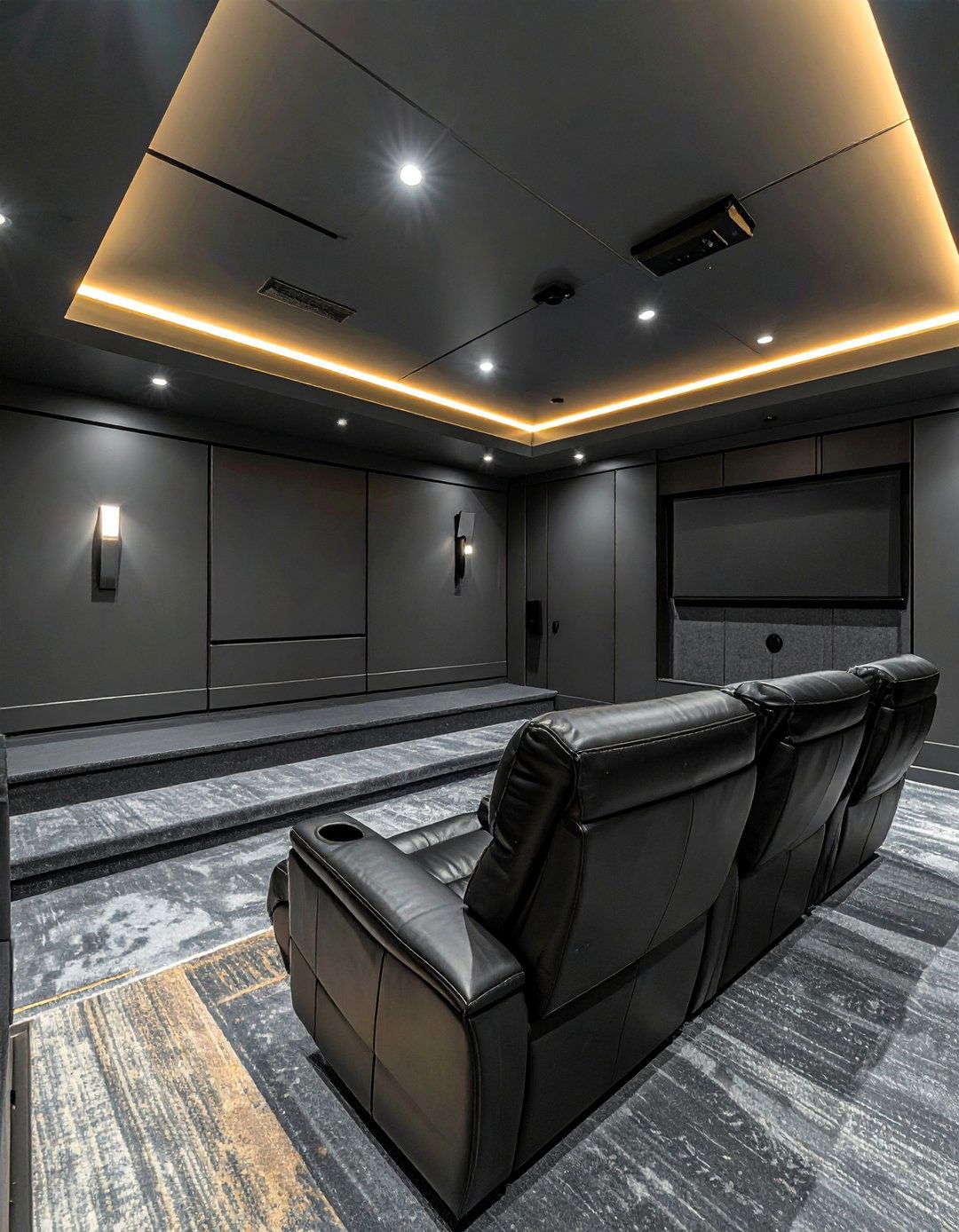
A deep charcoal gray paint scheme offers the pinnacle of light absorption, closely mimicking the environment of a professional cinema. This dark, rich shade is perfect for dedicated home theaters where controlling ambient light is the top priority. By minimizing reflections from walls and ceilings, charcoal gray ensures the screen remains the brightest and most captivating element in the room. Pair this intense color with plush, dark-colored seating and minimal decor to maintain a focused, distraction-free atmosphere. Soft, indirect lighting, such as sconces or recessed LEDs on dimmers, can add a touch of warmth and prevent the space from feeling too cavernous when the screen is off.
2. Slate Gray with Navy Blue Accents
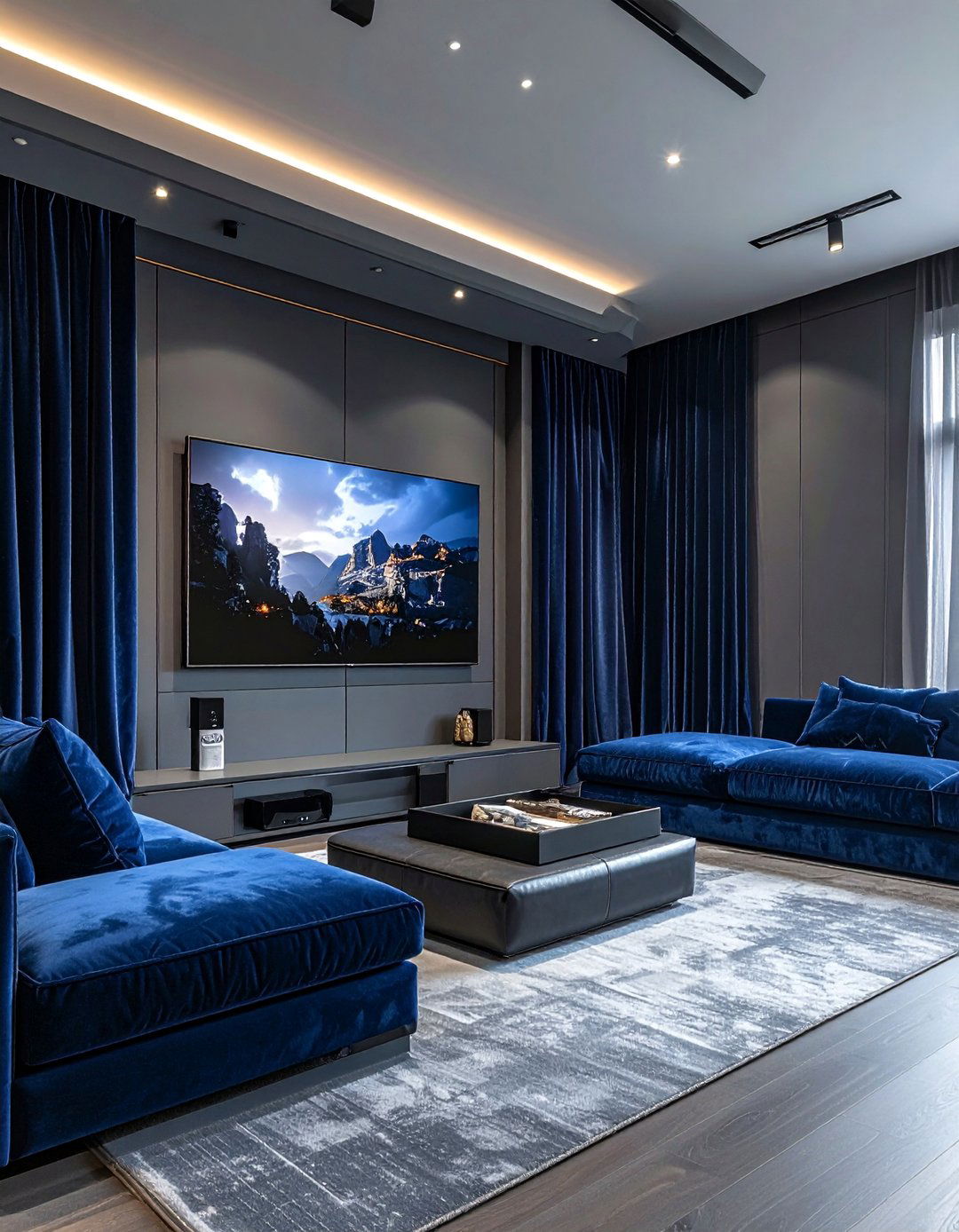
For a sophisticated and classic home theater, consider a slate gray wall color complemented by rich navy blue accents. Slate gray provides a cool, solid foundation that is dark enough to enhance screen contrast without being overwhelmingly black. Introducing navy blue through velvet curtains, throw pillows, or even a feature wall adds a layer of depth and timeless elegance. This combination feels both modern and luxurious. To complete the look, incorporate metallic details in brushed nickel or chrome for light fixtures and hardware, which will pop beautifully against the cool gray and deep blue color palette, creating a polished and cohesive design.
3. Warm Greige for a Multipurpose Media Room
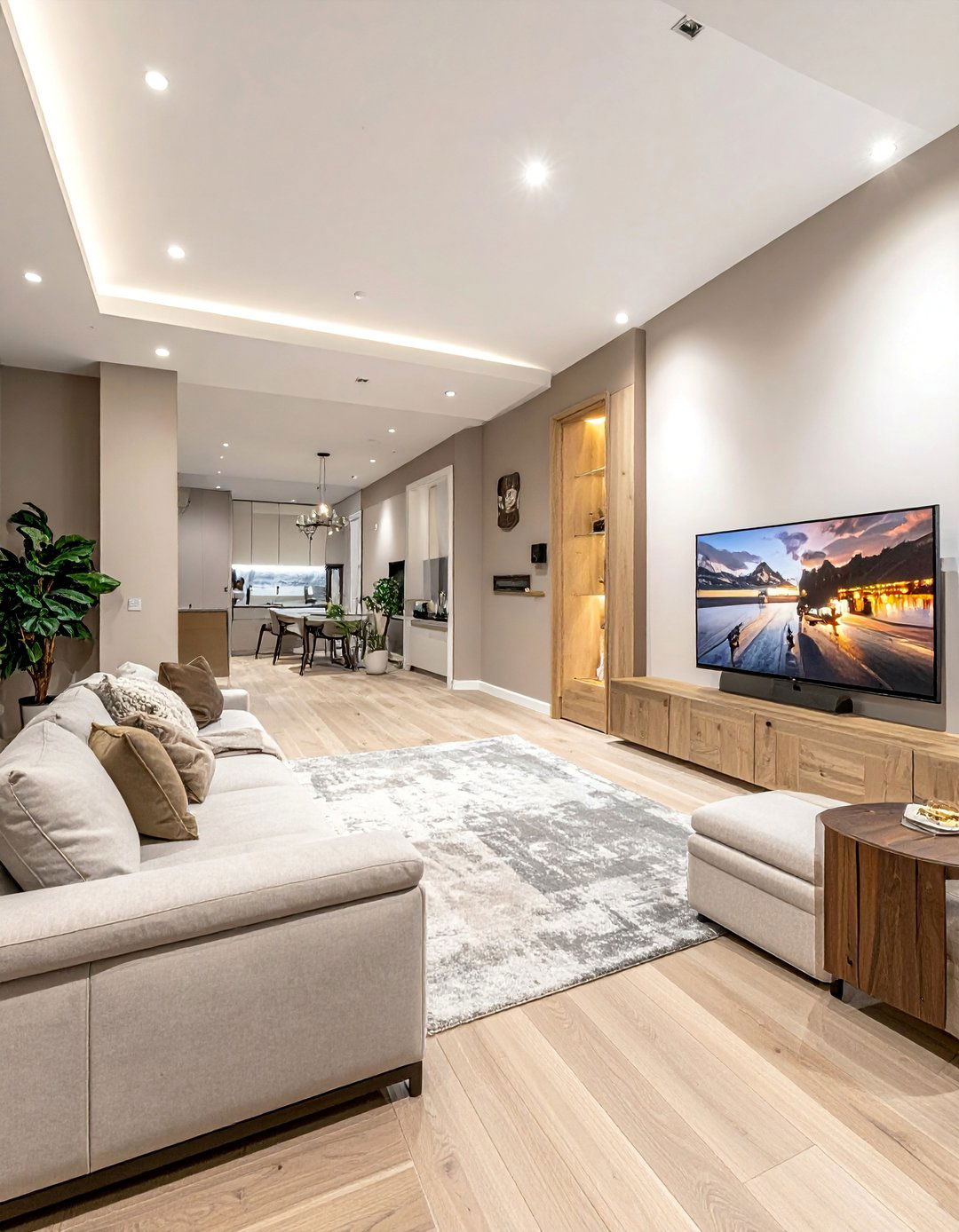
If your home theater also serves as a family or living room, a warm greige paint color is an excellent choice. This versatile shade blends the softness of beige with the sophistication of gray, creating a cozy and inviting atmosphere that feels comfortable for more than just watching movies. Greige is light enough to keep the room from feeling too dark during the day but has enough depth to reduce significant light bounce during viewing. It pairs beautifully with natural wood tones, cream-colored upholstery, and brushed gold accents, lending a sense of warmth and understated elegance to a multifunctional entertainment space.
4. Cool-Toned Light Gray for Small Spaces
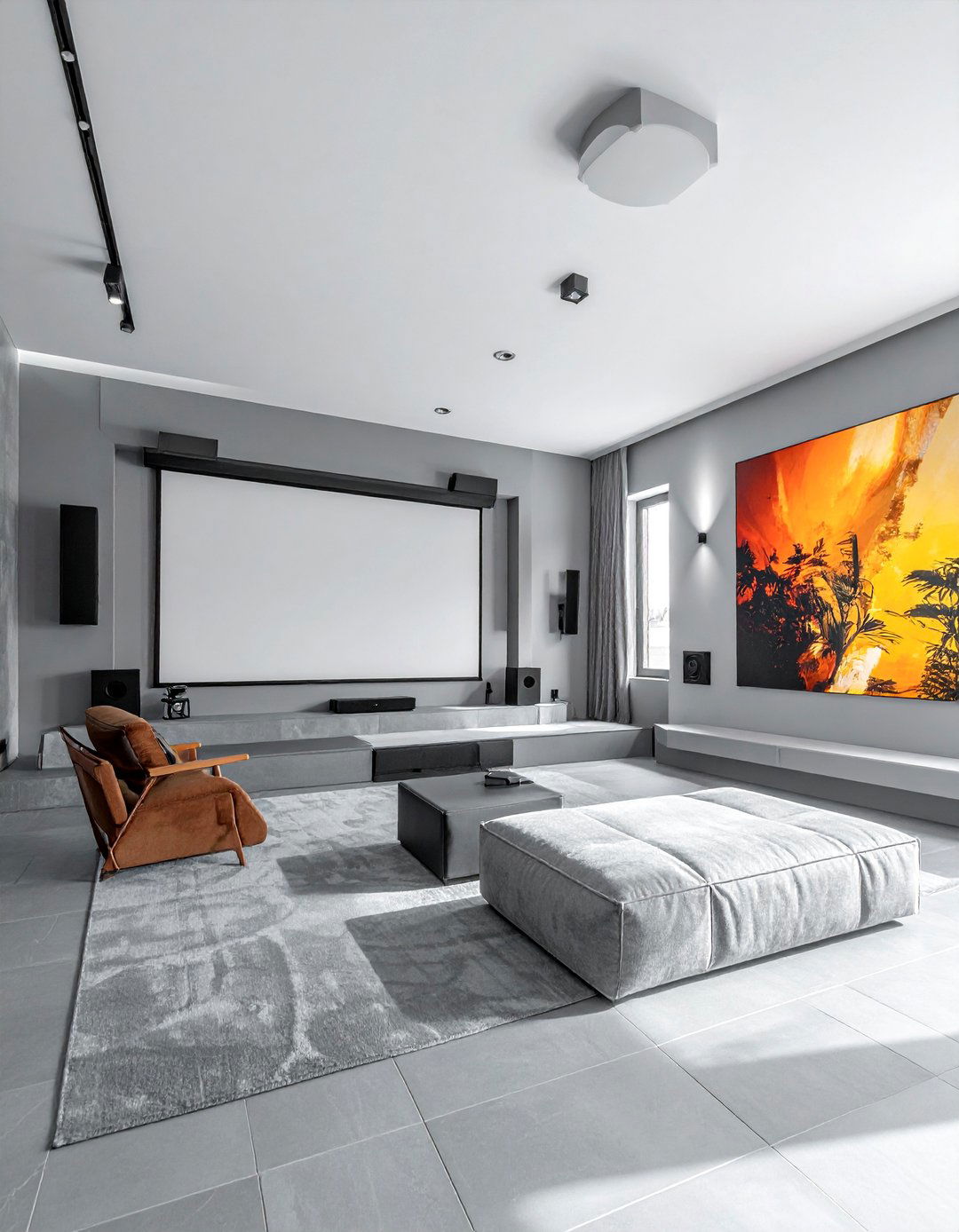
Transforming a smaller room into a home theater requires a color that won't make the space feel cramped. A cool-toned light gray with subtle blue or violet undertones is the perfect solution. This shade creates an airy, open feeling while still providing a neutral backdrop that is superior to stark white for screen viewing. It helps to maximize the perceived size of the room without sacrificing the benefits of a non-reflective surface. Combine it with a white ceiling to draw the eye upward and use streamlined, minimalist furniture. This approach ensures the focus remains on the screen while maintaining a sense of spaciousness.
5. Pewter Gray with Rich Burgundy Seating
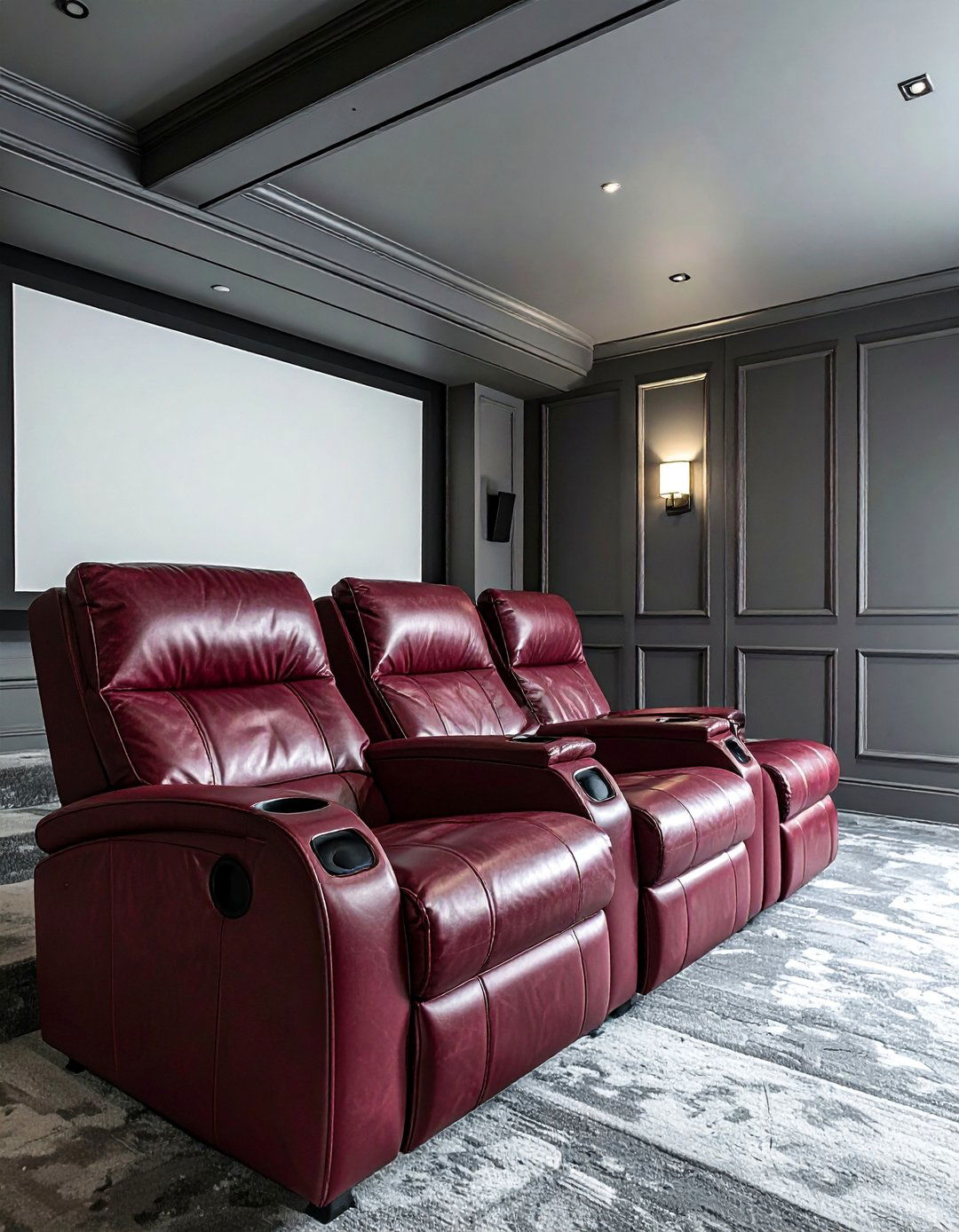
Create a truly regal and dramatic home theater with a pewter gray paint scheme accented by deep burgundy or maroon seating. Pewter is a medium-to-dark gray with a slight metallic sheen that adds a touch of luxury and visual interest. When paired with the richness of burgundy velvet or leather recliners, the combination is powerfully elegant and classic. This palette evokes the grandeur of old Hollywood theaters. Enhance this look with warm, dimmable lighting and dark wood finishes for media cabinets or side tables. The result is an opulent and inviting space that feels both traditional and incredibly immersive.
6. Matte Finish Iron Gray for Reduced Glare
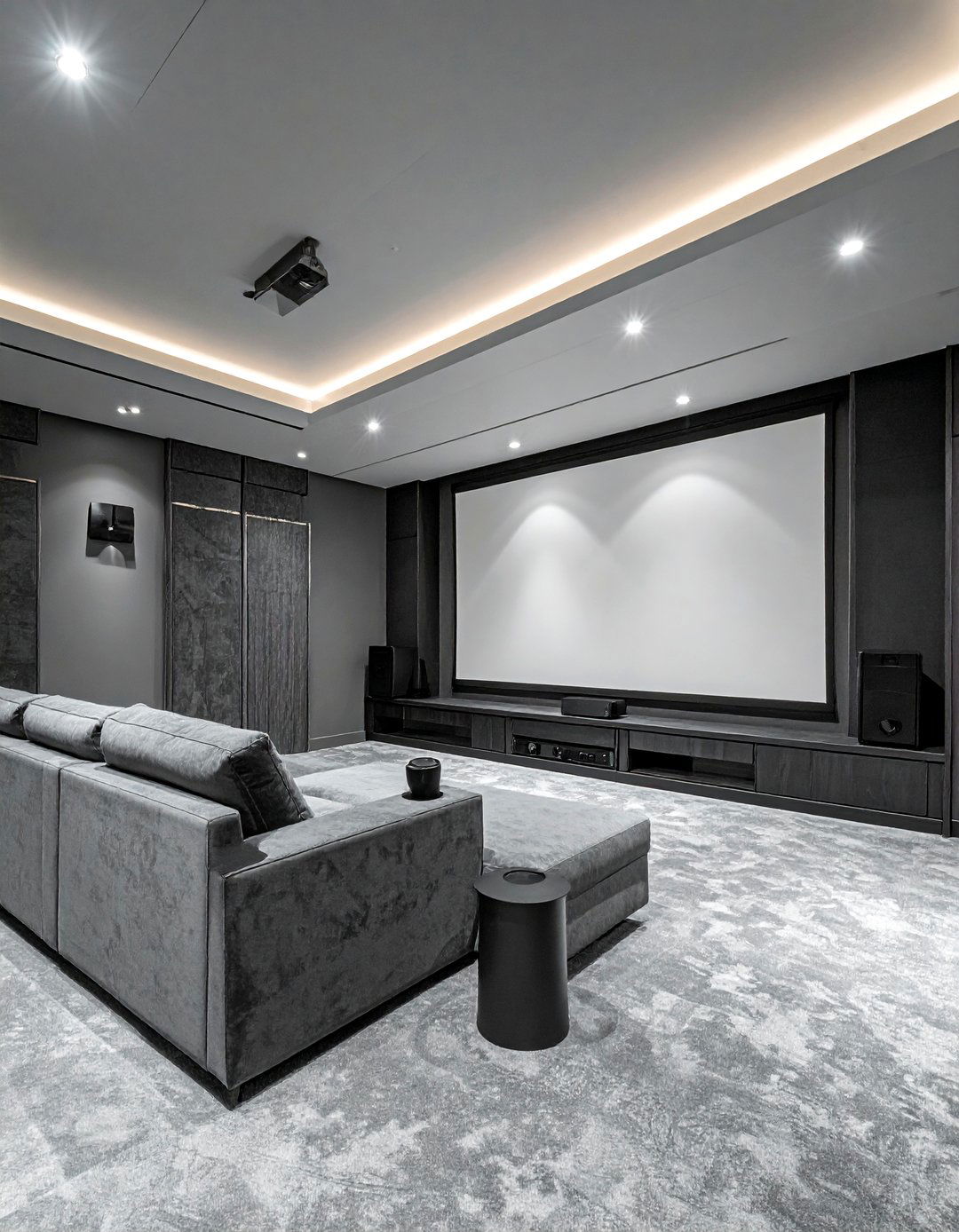
To achieve the best possible picture quality, minimizing glare is essential. An iron gray paint with a completely flat or matte finish is the ultimate choice for this purpose. Iron gray is a strong, dark neutral that absorbs a significant amount of light, and the matte sheen ensures that any light from the screen or fixtures doesn't create distracting reflections on the walls. This creates a pure, uninterrupted viewing experience. This color scheme is ideal for cinephiles and gamers who demand perfect visual clarity. Pair it with black acoustic panels and simple, functional furniture to emphasize its performance-oriented, professional-grade aesthetic.
7. Medium Gray with Exposed Brick or Stone
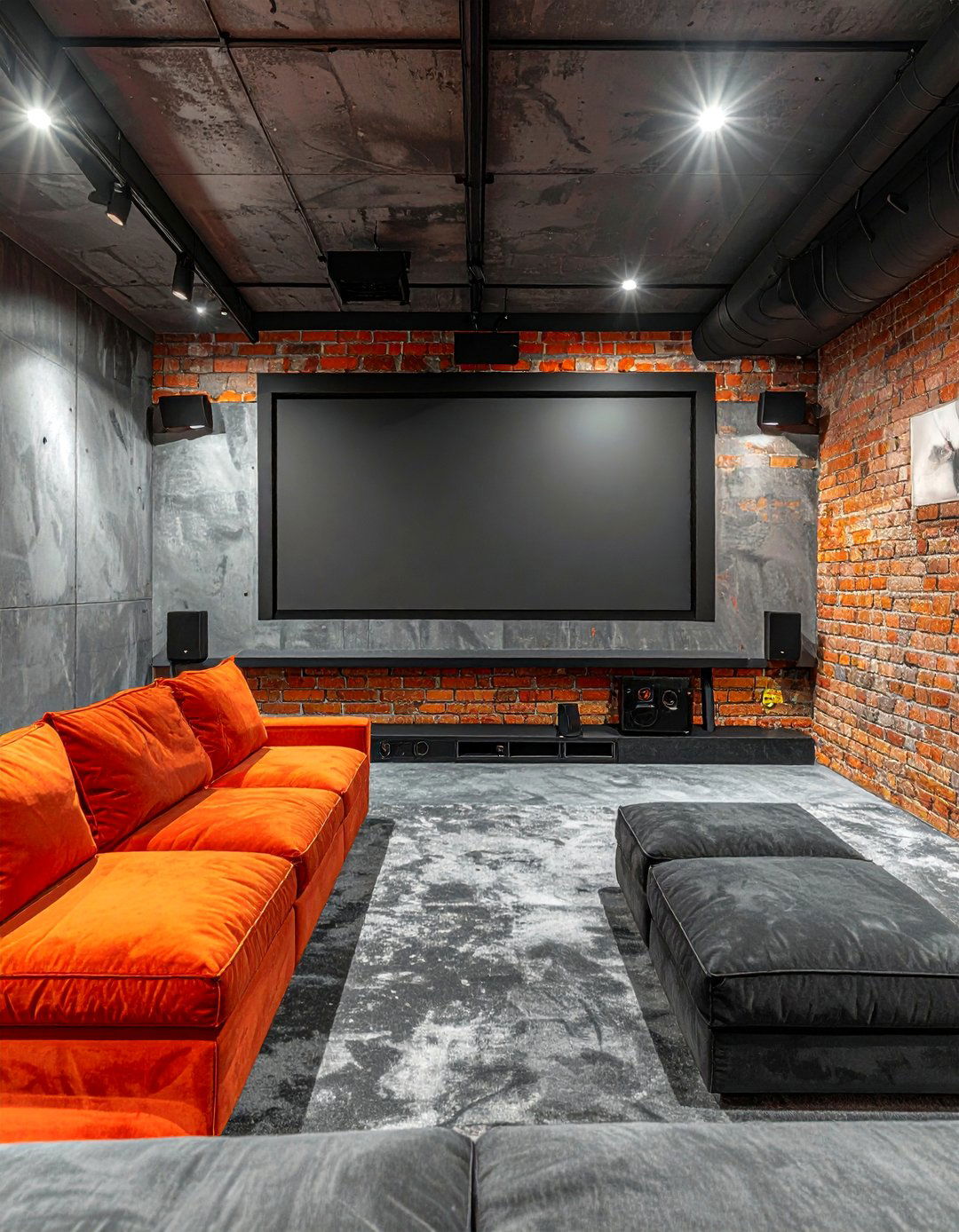
For a home theater with a rustic or industrial design, combine a medium gray paint color with an exposed brick or stone accent wall. The neutral gray on three walls provides the necessary light control for screen viewing, while the textured feature wall adds character, warmth, and a unique focal point. This blend of smooth, painted surfaces and rugged texture creates a dynamic yet balanced environment. Choose a shade of gray that complements the undertones in the brick or stone—a warmer gray for red bricks or a cooler gray for slate stone—to ensure a harmonious and visually appealing space.
8. Silver Gray for a Modern, High-Tech Look
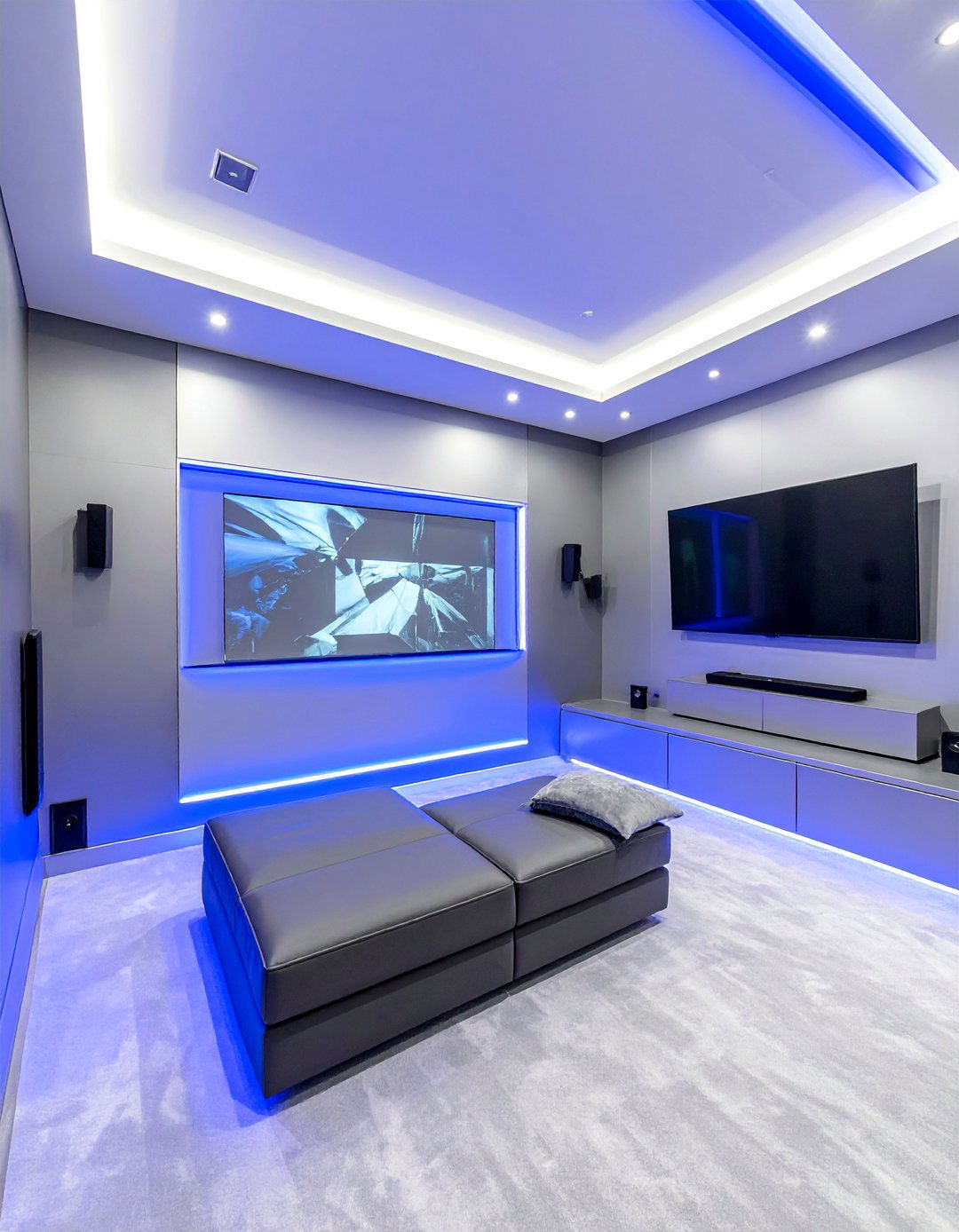
Achieve a sleek, futuristic aesthetic in your home theater with a silver-gray paint color. This light, crisp shade of gray has a subtle luminosity that feels clean and modern. It’s an excellent choice for rooms that feature cutting-edge technology, smart lighting, and minimalist furniture. To enhance the high-tech vibe, integrate customizable RGB LED strip lighting along the baseboards or behind the screen. The silver-gray walls will act as a perfect canvas, reflecting the colored lights to create dynamic and customizable viewing ambiances. Pair it with black leather seating and high-gloss finishes for a polished, contemporary media room.
9. Two-Tone Gray Wall Scheme
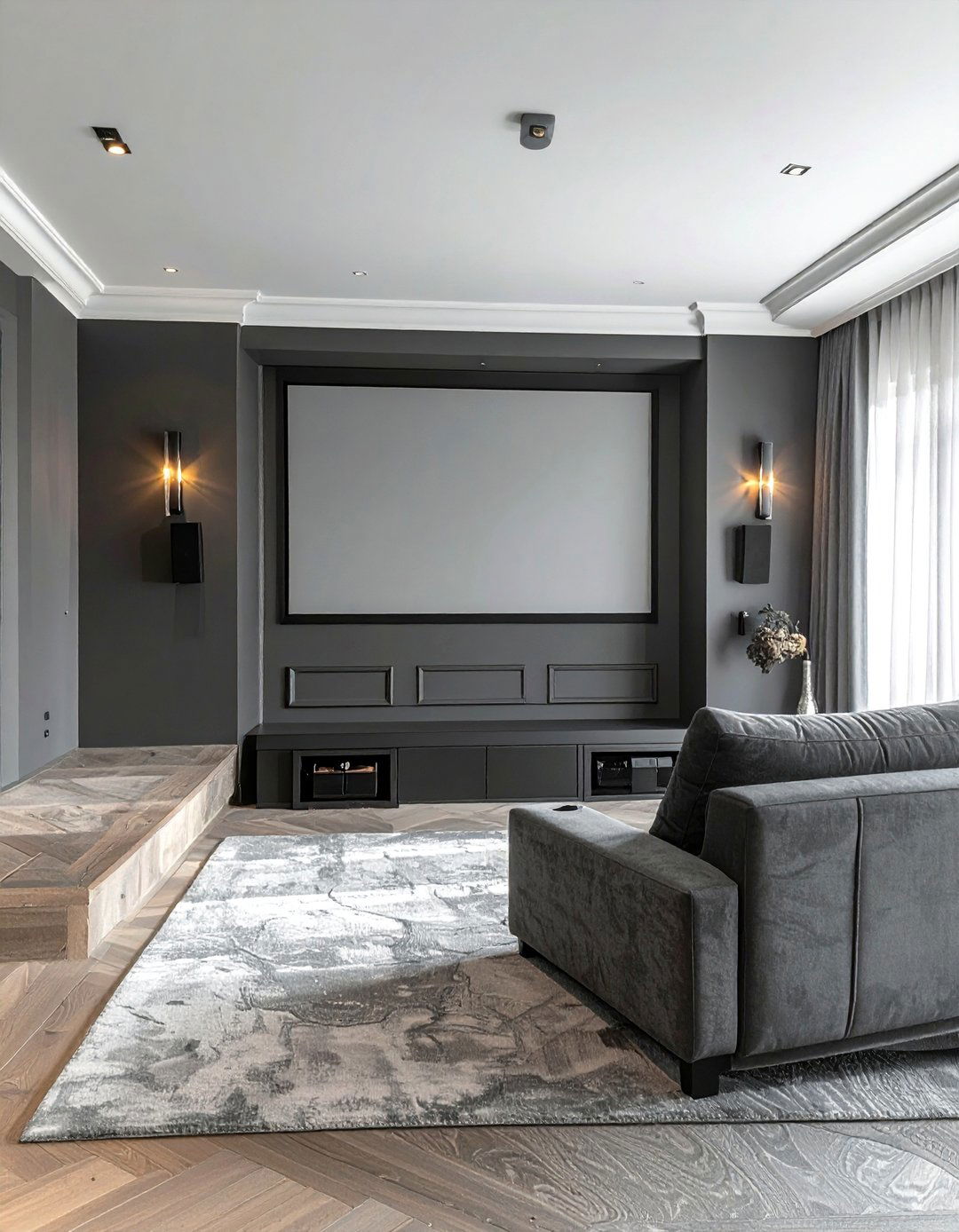
A two-tone gray scheme can add architectural interest and visual depth to a home theater. A popular technique is to paint the lower portion of the wall a darker shade, like charcoal, and the upper portion a lighter shade, such as dove gray. This can be separated by a chair rail for a traditional look. This approach grounds the space and draws the eye upward, making the room feel taller. The darker lower walls help absorb light near the seating area, while the lighter upper walls prevent the room from feeling too enclosed. It’s a sophisticated design choice that is both functional and stylish.
10. Ash Gray with Natural Wood Accents
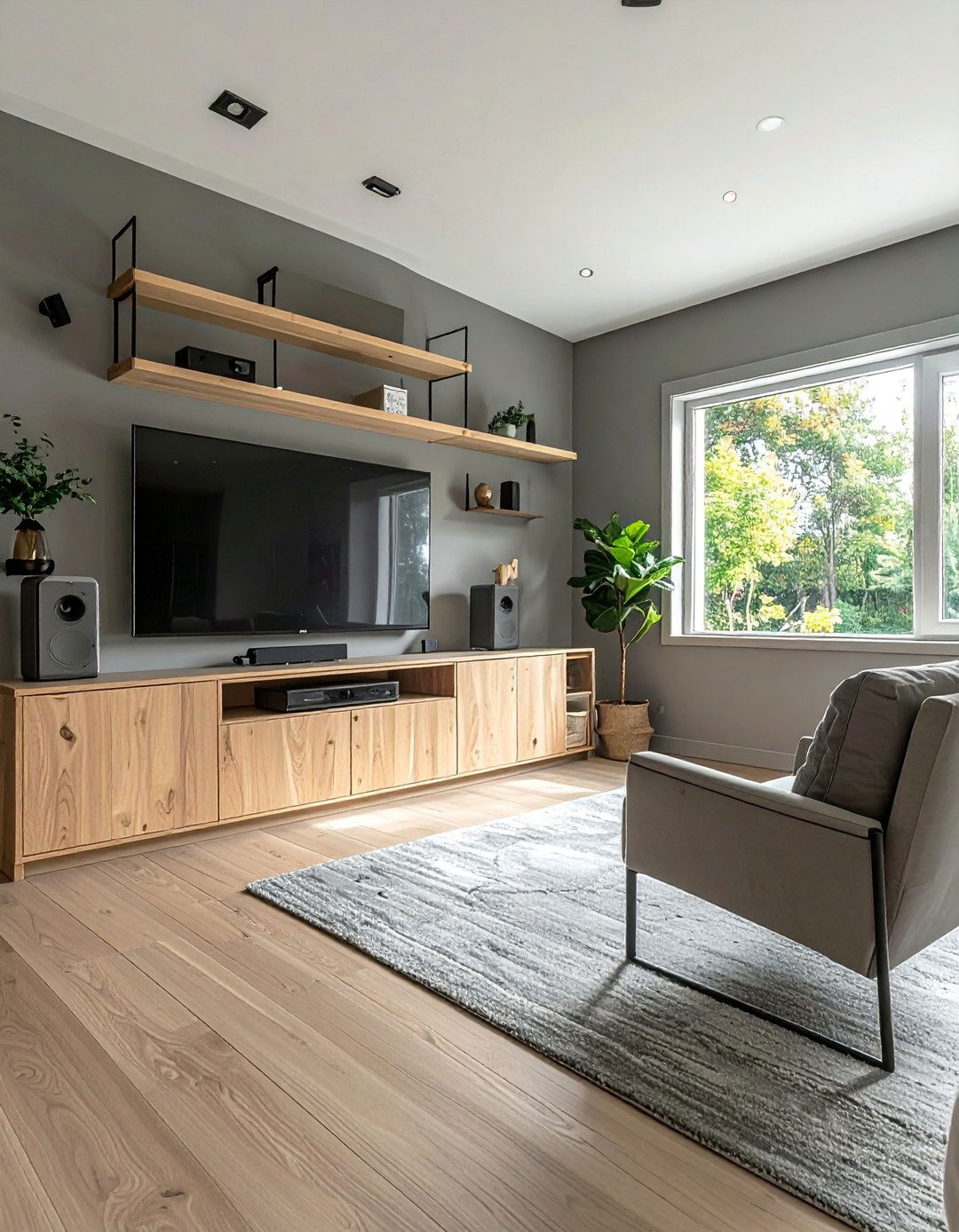
For a home theater that feels balanced and serene, pair a soft ash gray wall color with natural wood accents. Ash gray is a light-to-medium gray with a calming, earthy quality that prevents the space from feeling cold or sterile. Incorporating elements like a wooden media console, floating shelves, or ceiling beams adds warmth, texture, and an organic touch. This combination is inspired by Scandinavian and Japandi design principles, creating a space that is both functional for media consumption and relaxing for unwinding. It’s an ideal scheme for those who want their theater to be a peaceful retreat.
11. Dark Gray Ceiling for an Enveloping Feel
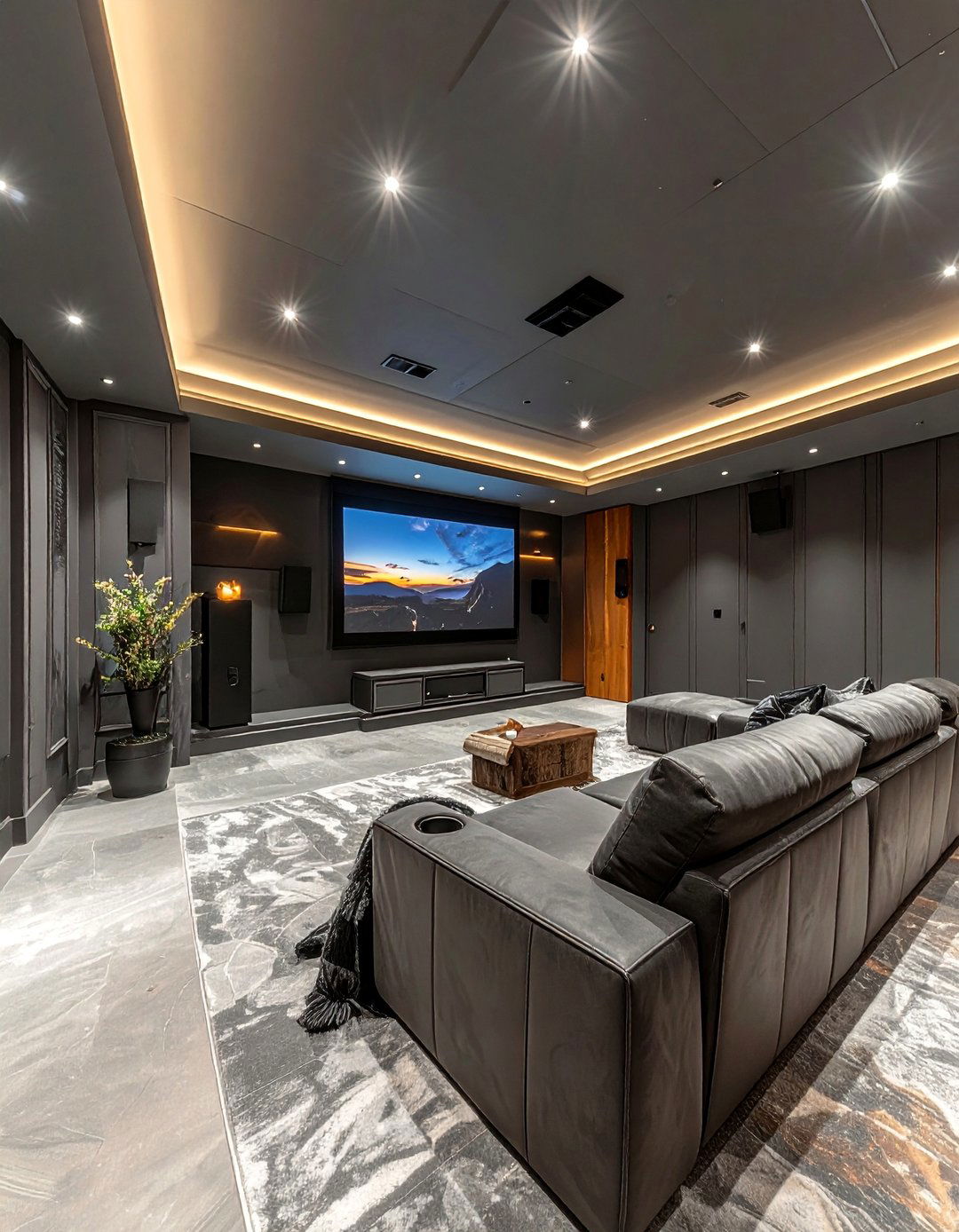
Painting the ceiling a dark gray, such as charcoal or graphite, is a bold design move that can make a home theater feel incredibly immersive. By darkening the ceiling, you effectively make it "disappear" during viewing, which eliminates a major source of light reflection and enhances the feeling of being completely enveloped by the movie. This technique works best in rooms with sufficient ceiling height to avoid feeling claustrophobic. Keep the walls a slightly lighter shade of gray to create subtle contrast. This creates a cozy, cave-like environment that is perfect for losing yourself in another world on screen.
12. Flint Gray with Black Trim and Doors
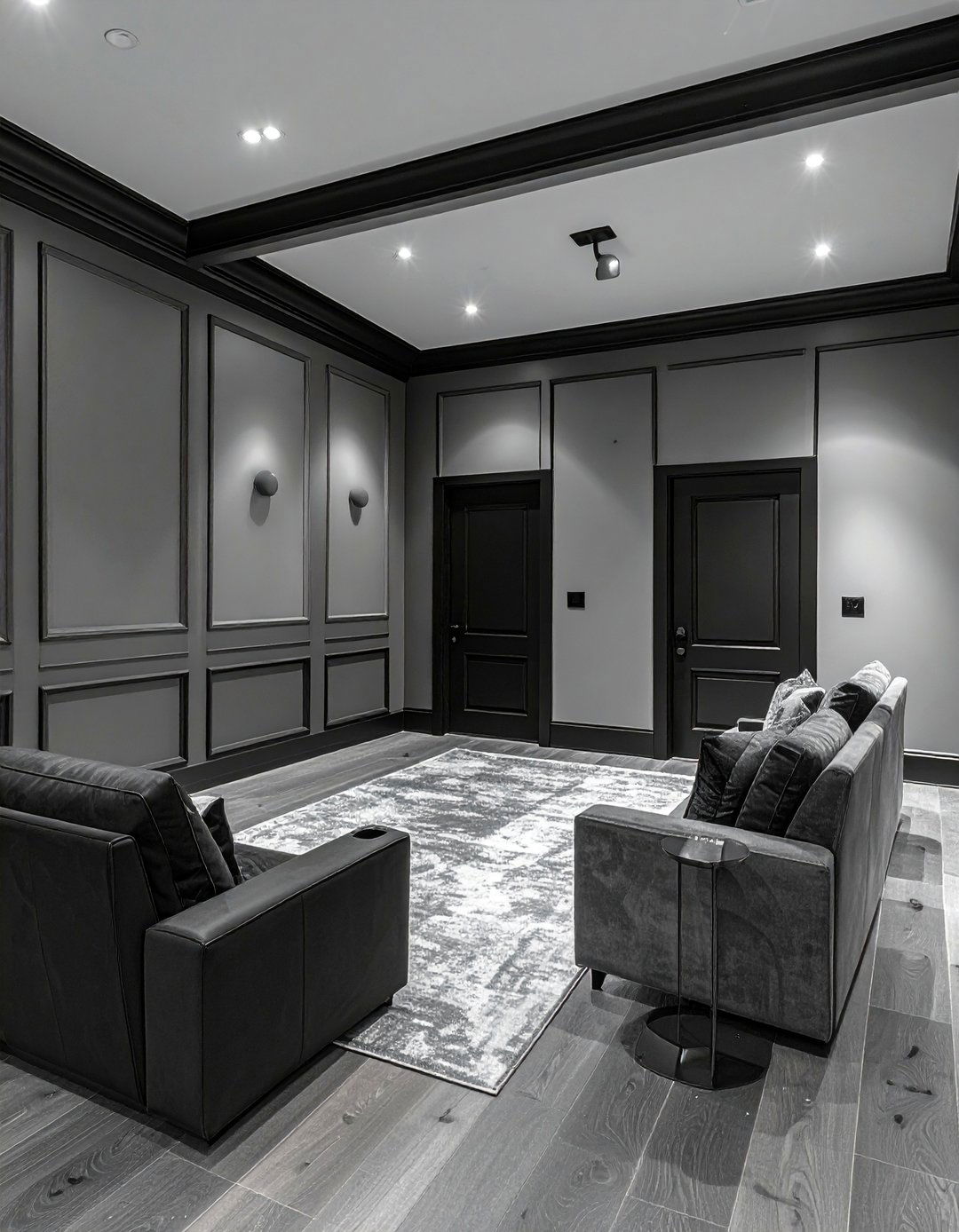
To create a sharp, defined, and contemporary look, use a medium flint gray for the walls and pair it with bold black paint for the trim, baseboards, and doors. This high-contrast combination is clean and intentional, adding a graphic quality to the home theater's design. The flint gray provides a sophisticated, neutral backdrop, while the black trim frames the room and makes the architectural details stand out. This scheme is particularly effective in modern or minimalist spaces. It highlights clean lines and creates a polished, tailored appearance that feels deliberate and stylish without being distracting during a movie.
13. Cement Gray for an Industrial Aesthetic
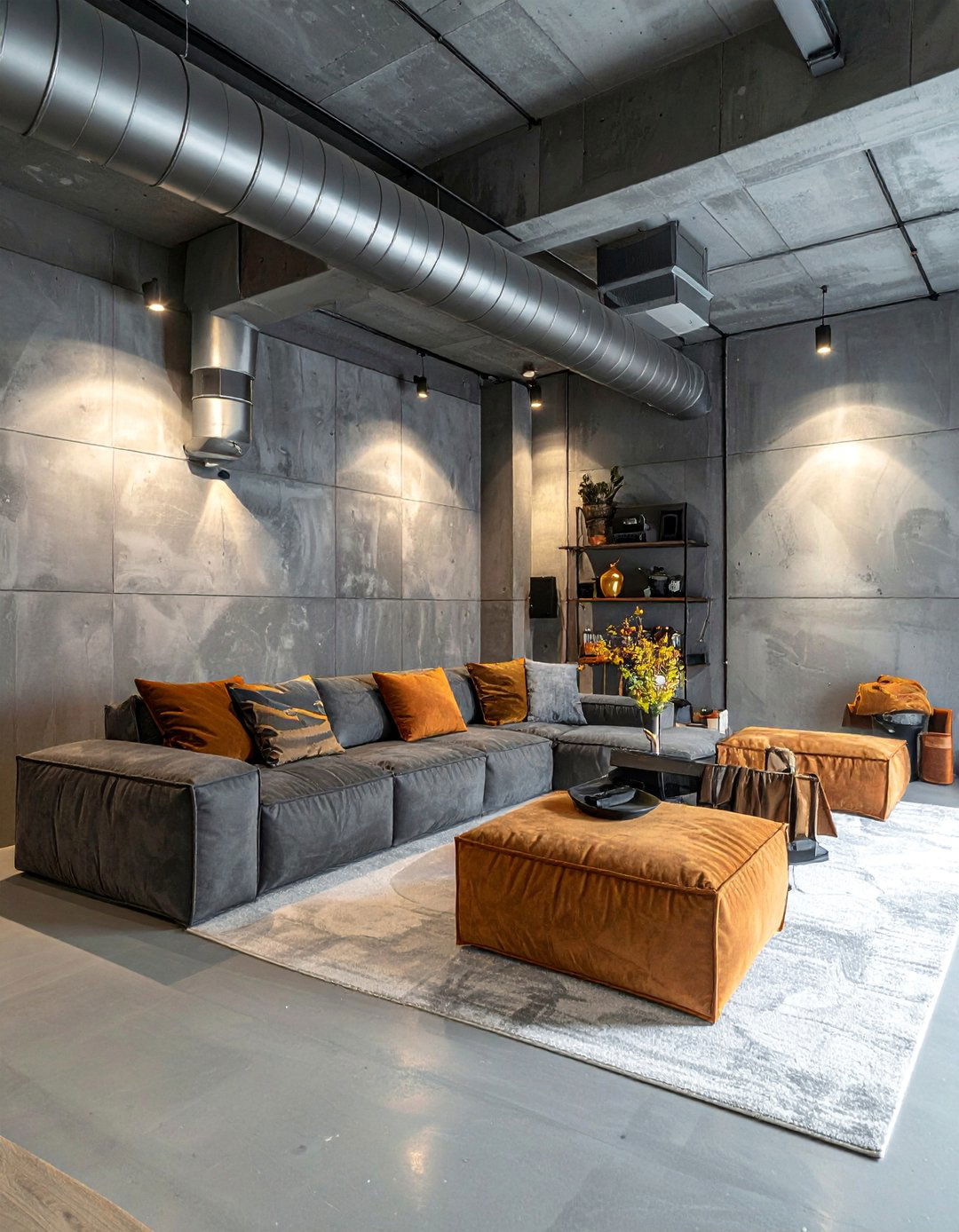
Embrace an edgy, urban vibe in your home theater with a cement gray paint color. This shade mimics the look of raw concrete, offering a cool, industrial foundation for your space. It's a medium gray that is highly versatile and works exceptionally well with metal accents, exposed ductwork, and minimalist furniture. To soften the look and improve acoustics, introduce textures through a plush area rug, fabric wall panels, or comfortable, oversized seating. The utilitarian feel of cement gray provides a unique backdrop that is both stylish and effective at minimizing light glare, perfect for a modern media loft or basement.
14. Dove Gray for a Bright and Airy Feel
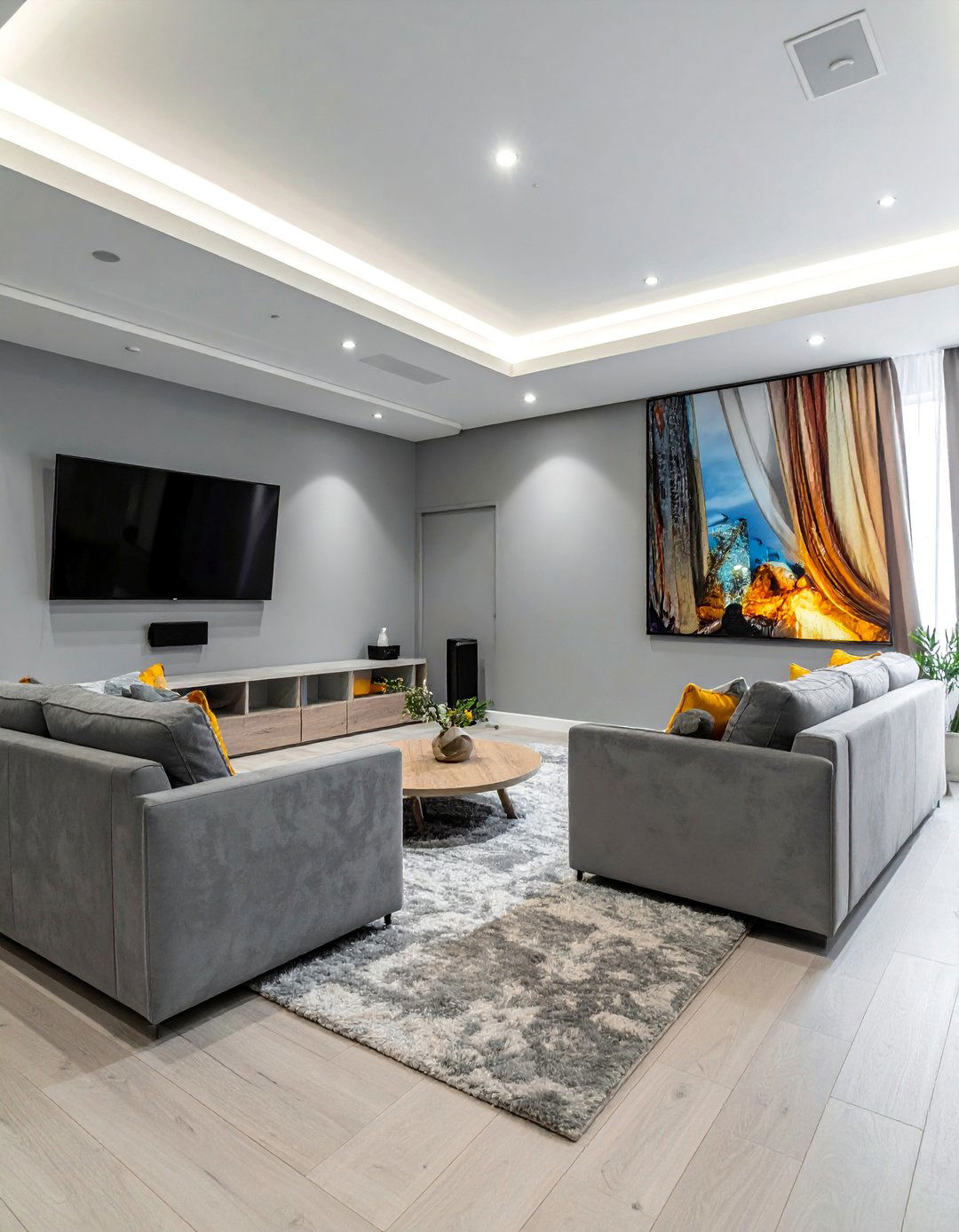
If your goal is a home theater that feels open and inviting even when not in use, dove gray is an ideal color choice. As a soft, light gray with warm undertones, it maintains a bright and airy atmosphere while still being more effective for screen viewing than off-white or beige. It's a perfect compromise for a multi-use room, providing a gentle backdrop that feels welcoming and spacious. Dove gray pairs beautifully with a wide range of accent colors, from soft pastels to bold primary colors, giving you plenty of flexibility to personalize the decor and make the space your own.
15. Graphite Gray with Gold or Brass Accents
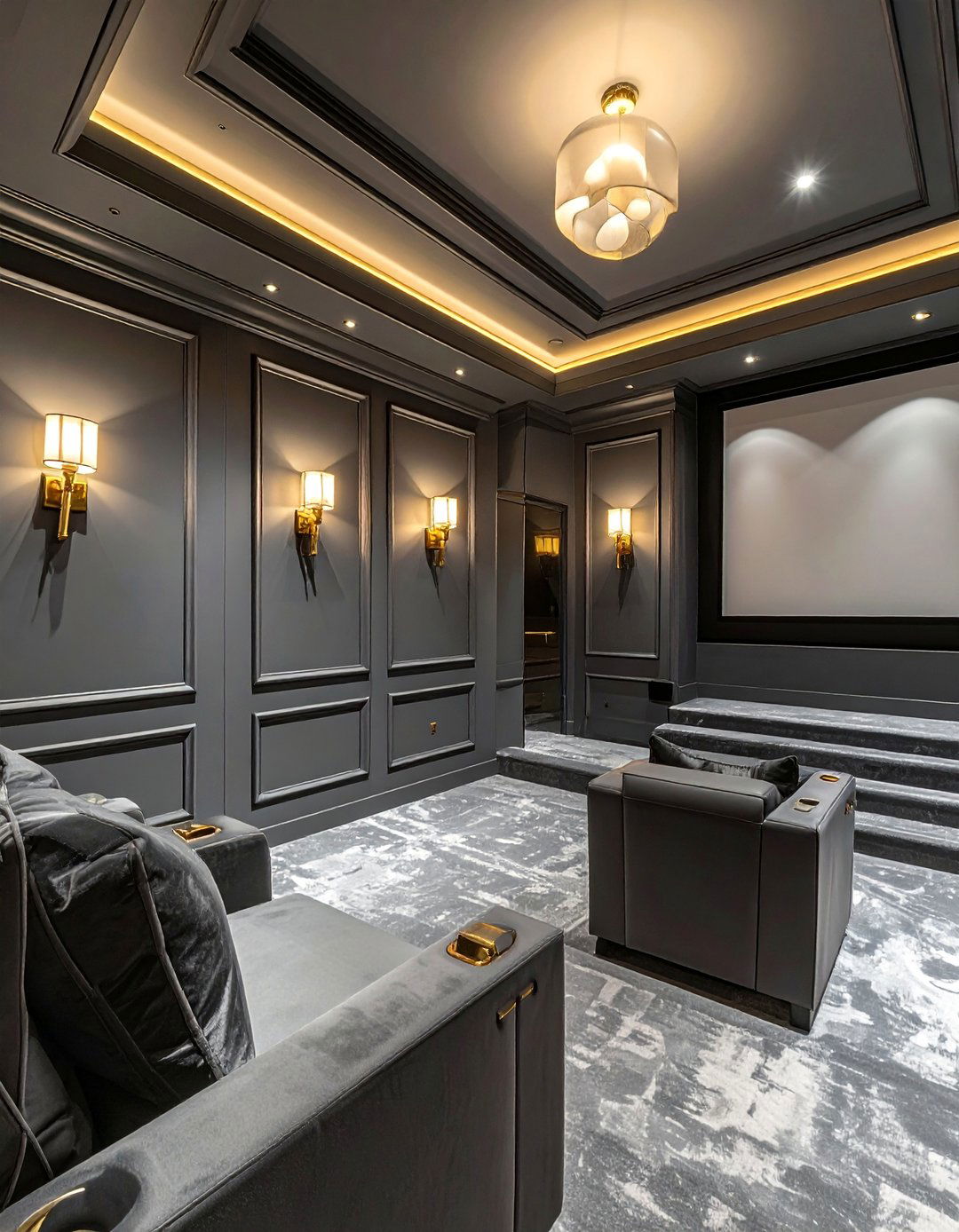
Combine the deep, moody tones of graphite gray with the warm, lustrous appeal of gold or brass accents for a luxurious and glamorous home theater. Graphite is a dark, near-black gray that creates a dramatic and intimate setting. The addition of brushed gold or brass in light fixtures, cabinet hardware, or side table legs introduces a touch of opulence and warmth that prevents the dark walls from feeling too stark. This elegant combination strikes a perfect balance between modern sophistication and classic glamour, resulting in a space that feels both high-end and incredibly inviting for a movie night.
16. Gray with Textured Acoustic Wall Panels
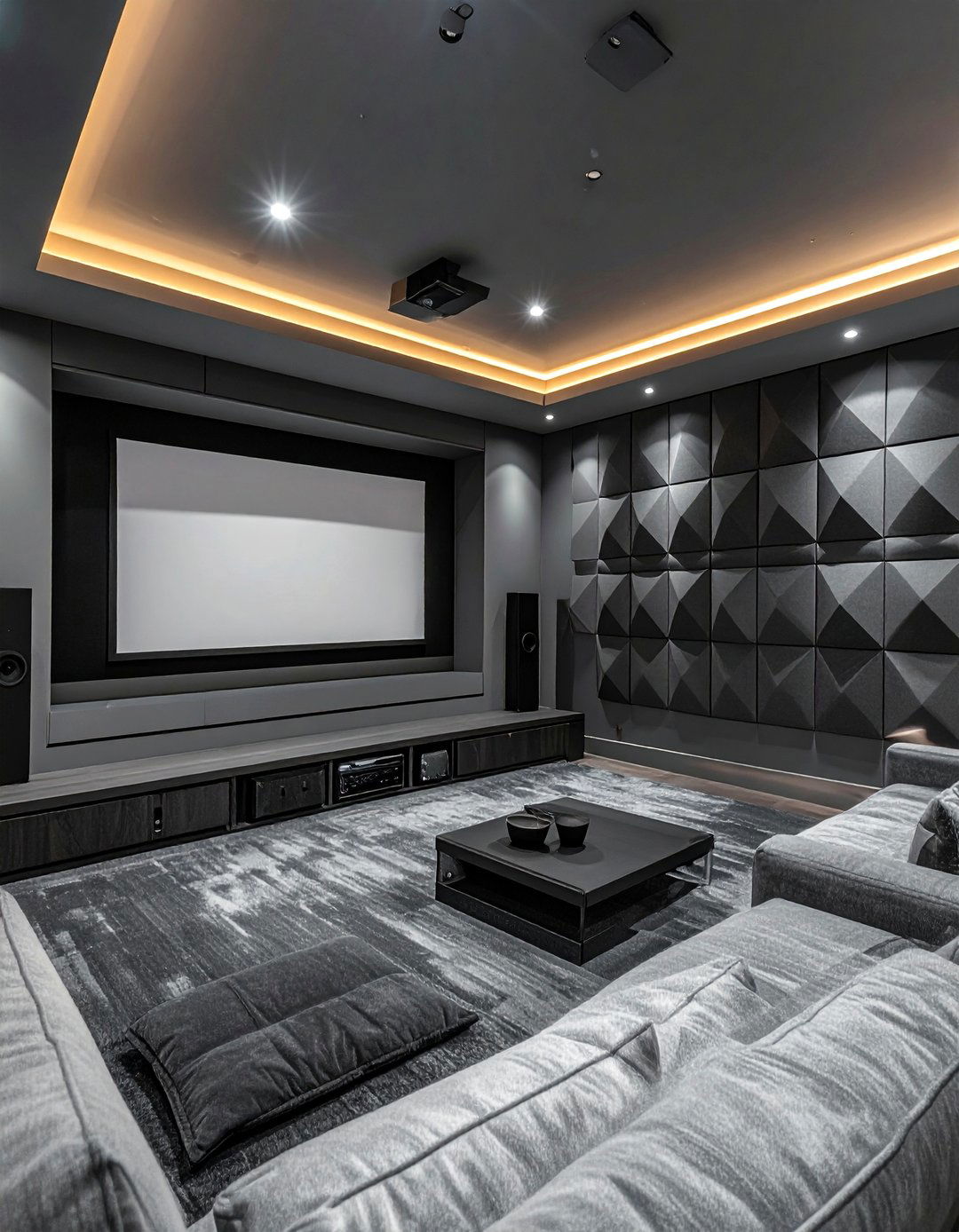
Enhance both the aesthetics and function of your home theater by pairing a neutral gray paint with textured acoustic wall panels. Choose a versatile shade of medium gray for the walls, then install fabric-wrapped acoustic panels in a complementary or contrasting gray on key surfaces. These panels not only absorb sound and improve audio clarity but also add a layer of visual texture and depth to the room. You can arrange them in a geometric pattern for a modern look or cover an entire feature wall. This scheme is the perfect marriage of form and function, delivering professional-grade performance with a sophisticated design.
17. Green-Gray for a Natural and Calming Vibe
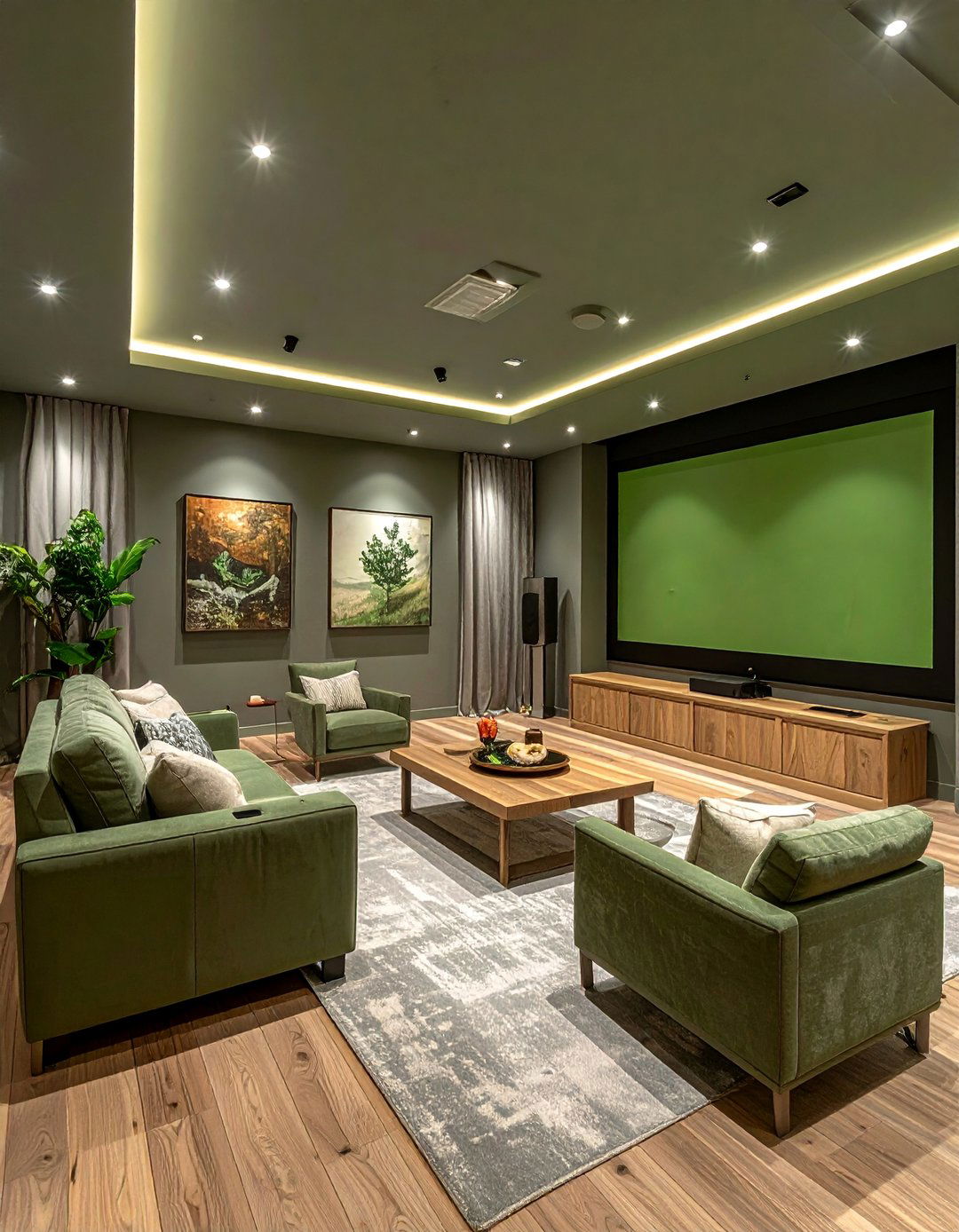
For a home theater that feels like a tranquil escape, choose a gray paint with distinct green undertones, often known as sage gray or lichen. This color brings a subtle touch of nature indoors, creating a calming and restorative atmosphere. It's a unique choice that is dark enough to provide a good viewing experience but soft enough to feel serene and relaxing. This shade works wonderfully with light wood tones, indoor plants (if the room gets some natural light), and textiles in earthy colors like cream, beige, and moss green. It’s perfect for creating a media room that doubles as a peaceful retreat.
18. Purple-Gray for a Touch of Royalty
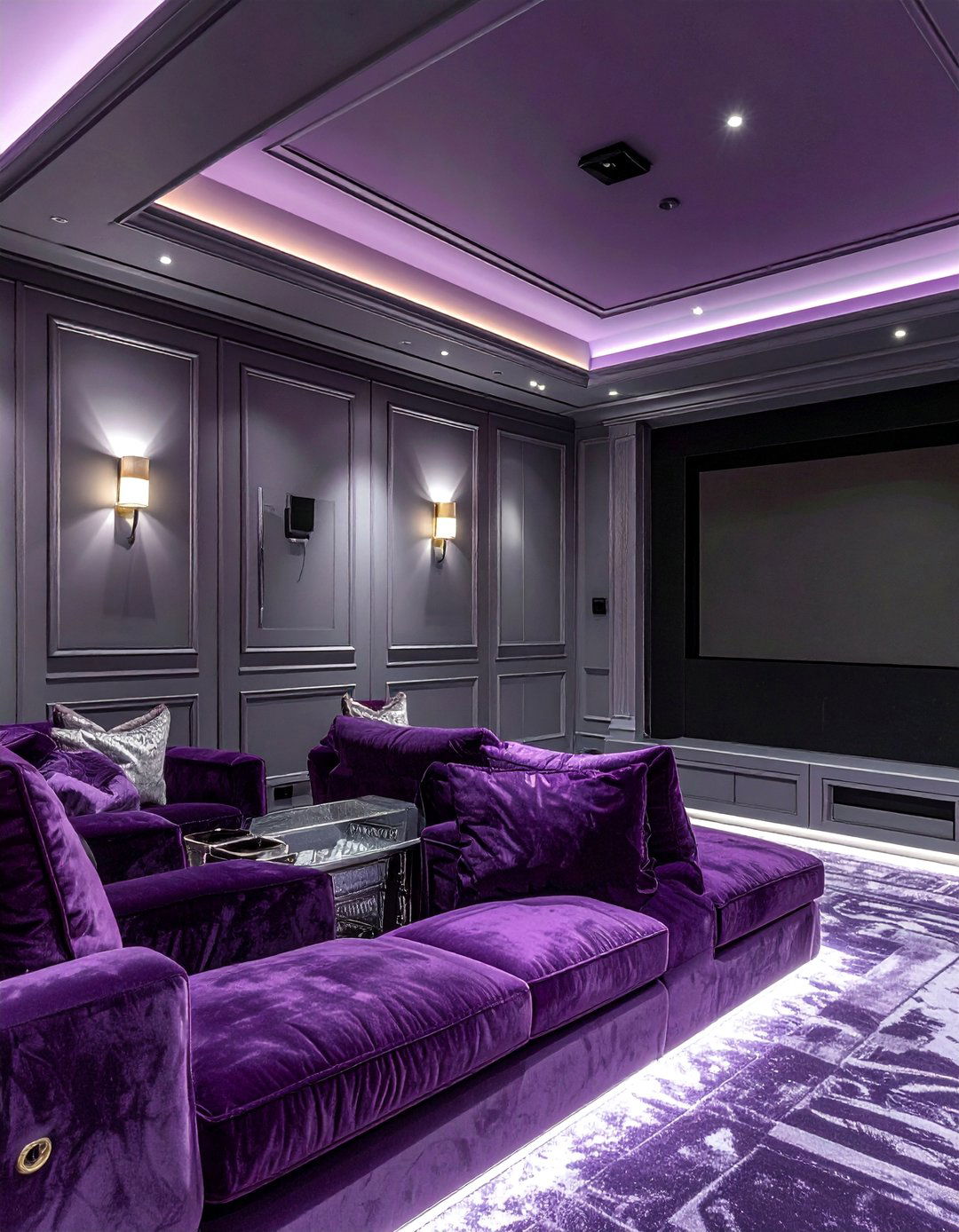
Infuse your home theater with a sense of drama and sophistication by using a gray paint with a clear purple or mauve undertone. This unique shade, sometimes called dusky lavender or wisteria gray, offers a hint of color that is both elegant and unexpected. It creates a rich, moody ambiance that feels special and luxurious. Pair it with plush fabrics like velvet in deeper plum or eggplant shades for seating and curtains. Metallic accents in silver or pewter will complement the cool tones in the paint, completing a look that is distinctive, regal, and perfectly suited for an immersive cinematic experience.
19. Almost-Black Gray for Maximum Immersion
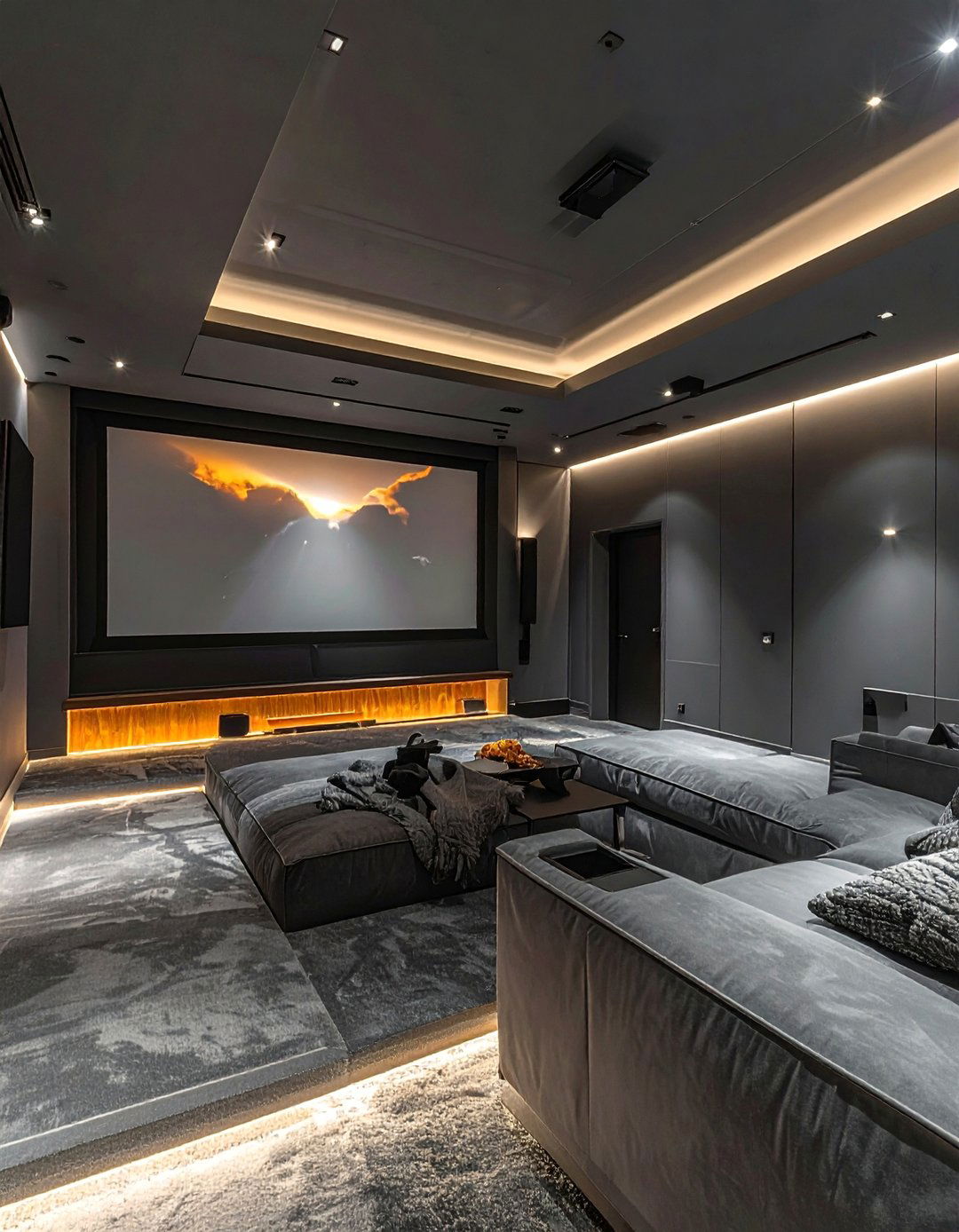
For the ultimate purist seeking the most immersive home theater experience possible, an almost-black shade of gray is the answer. Colors like 'Off-Black' or 'Railings' provide the depth and light-absorbing qualities of black without the harshness, offering a slightly softer and more sophisticated finish. This choice ensures that the room virtually disappears when the lights are dimmed, leaving only the vibrant colors of the screen. This scheme demands comfortable seating and high-quality sound to complete the professional-grade setup. It is a bold commitment to performance, creating a distraction-free sanctuary designed solely for the love of film.
20. Stone Gray with Warm, Dimmable Lighting
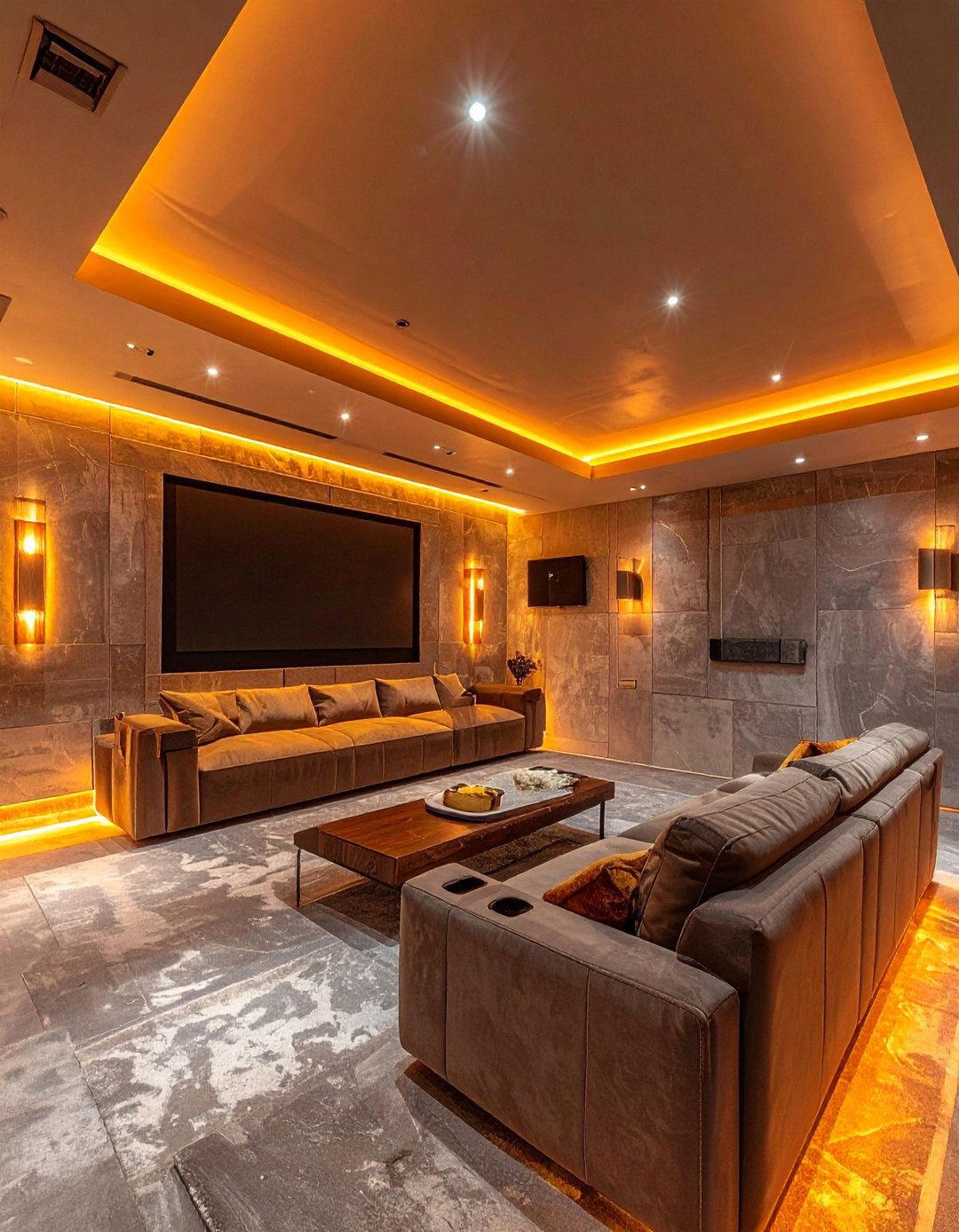
Create a versatile and welcoming home theater atmosphere with a neutral stone gray paint color. This mid-tone gray is a timeless and balanced choice that works well in nearly any setting. The key to elevating this scheme is the integration of warm, dimmable lighting. Use wall sconces, recessed ceiling lights, and LED strips with a warm color temperature (around 2700K) to cast a soft, inviting glow. This allows you to adjust the room's ambiance from bright and functional to dim and cinematic with ease. The warm light interacts beautifully with the neutral gray walls, creating a cozy and comfortable environment for any occasion.
Conclusion:
Gray is an undeniably superior choice for home theater paint, offering a perfect blend of style and functionality. Whether you prefer a dark, enveloping charcoal for a dedicated cinema or a light, airy greige for a multipurpose media room, there is a gray shade to suit your needs. By considering undertones, finishes, and accent colors, you can craft a space that not only enhances picture quality by minimizing light reflection but also reflects your personal aesthetic. Ultimately, the right gray paint scheme will transform your room into a sophisticated and immersive entertainment hub for years to come.

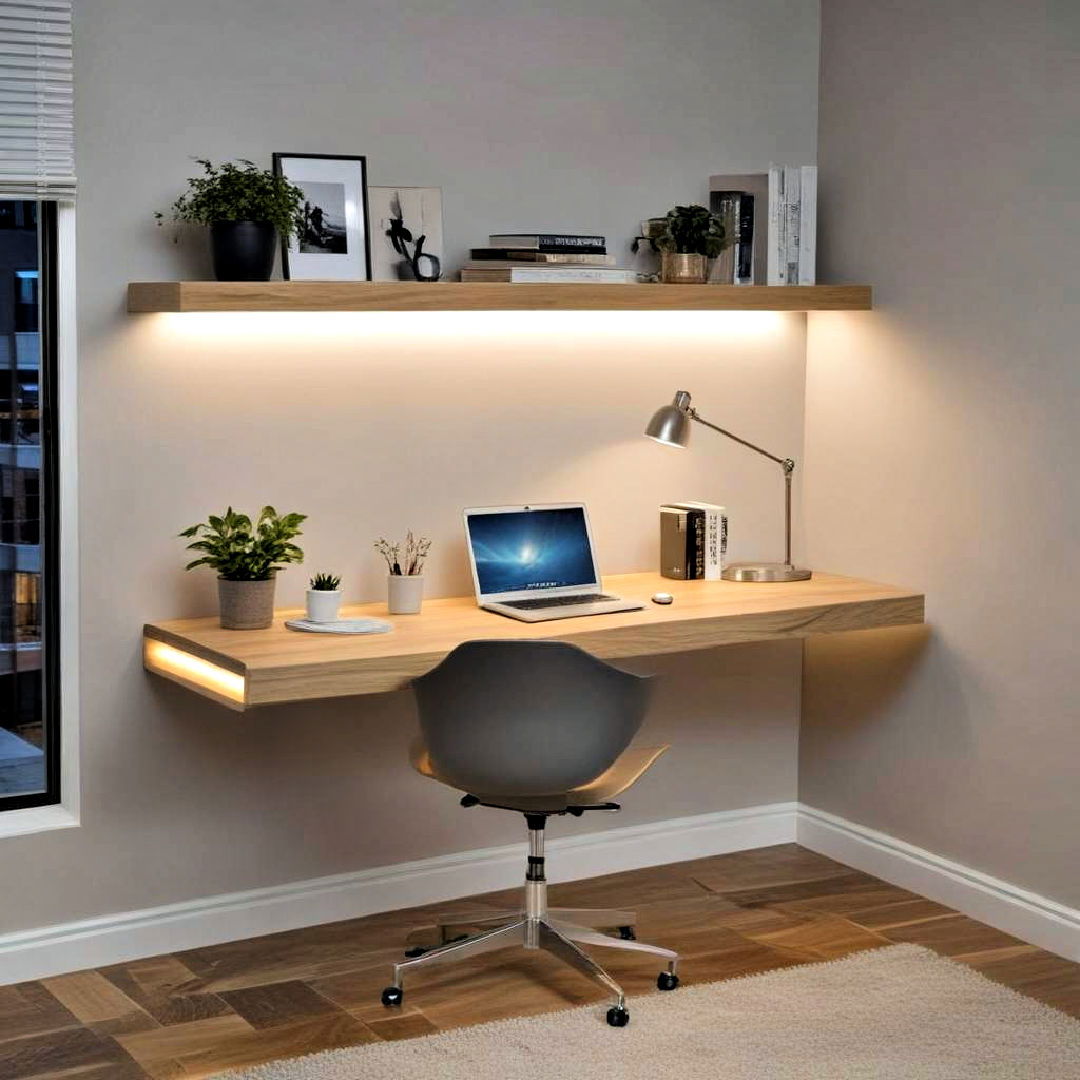
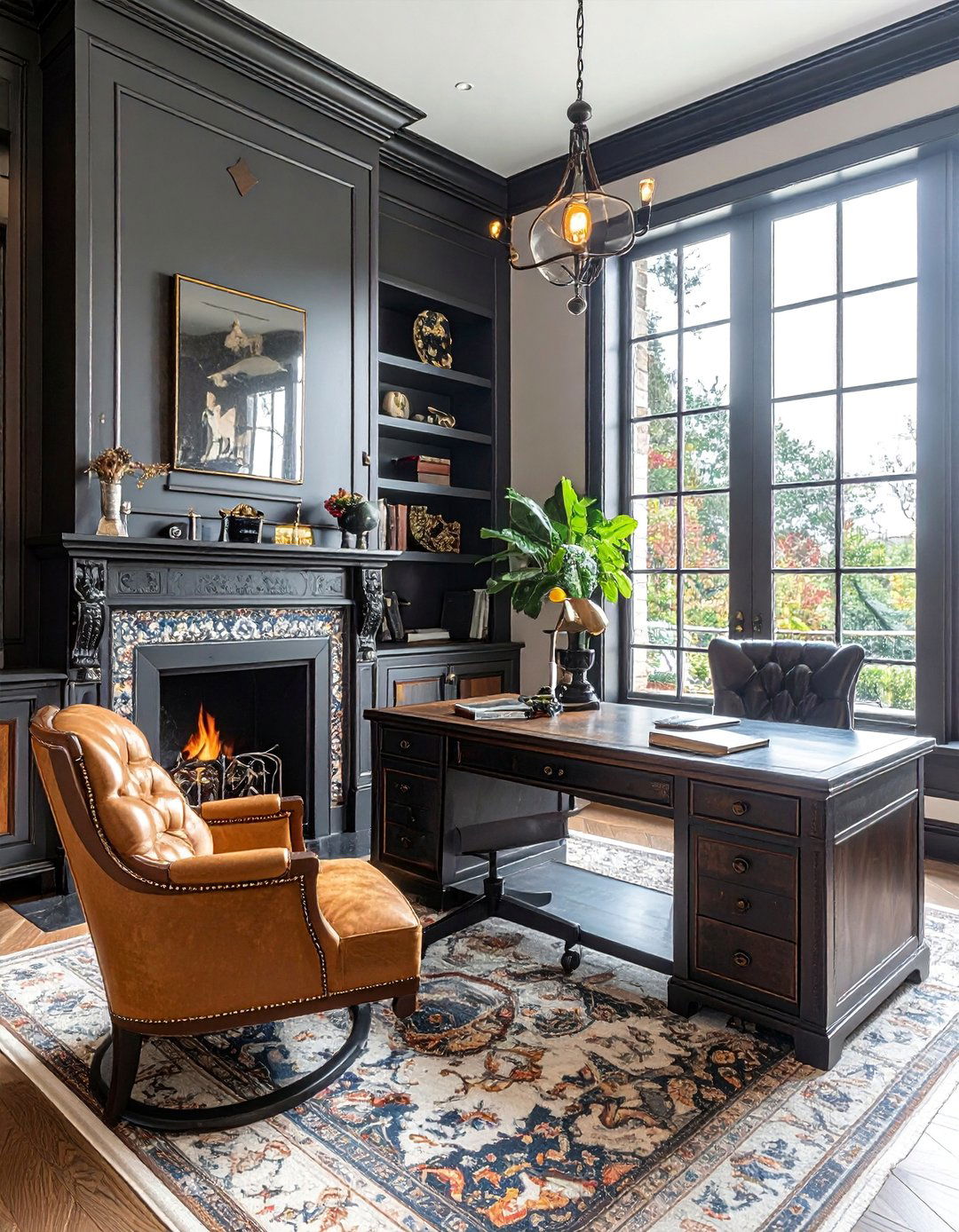
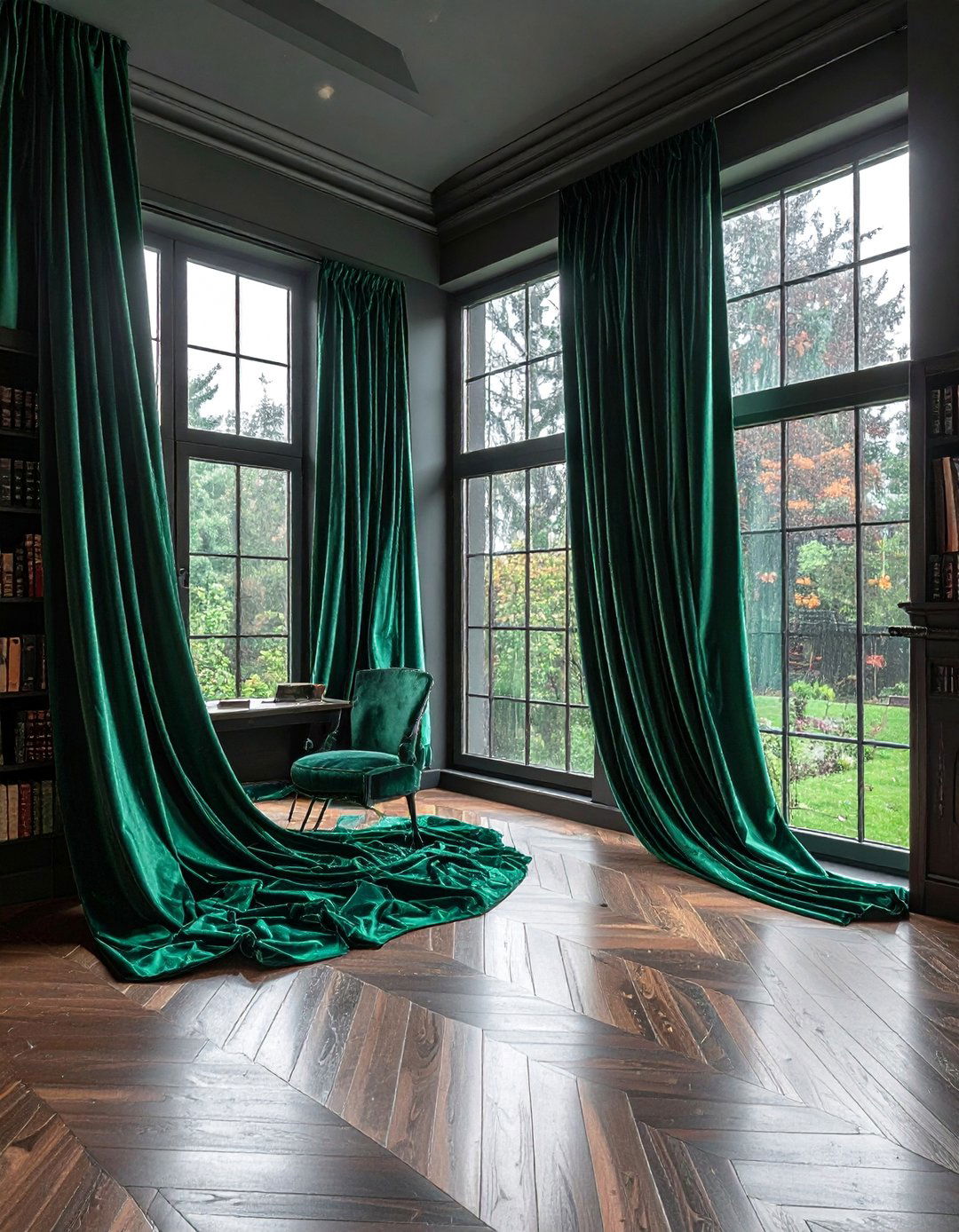
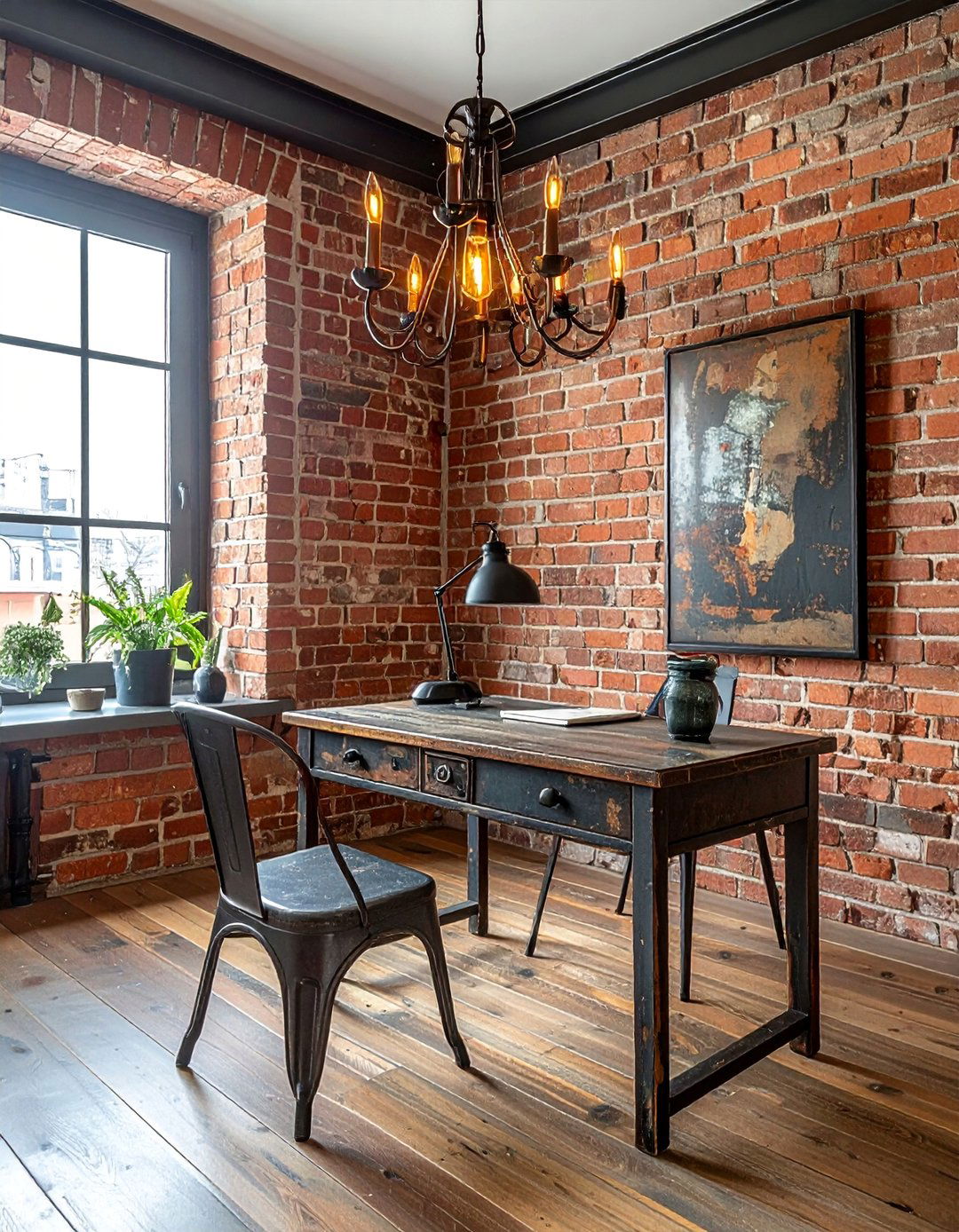
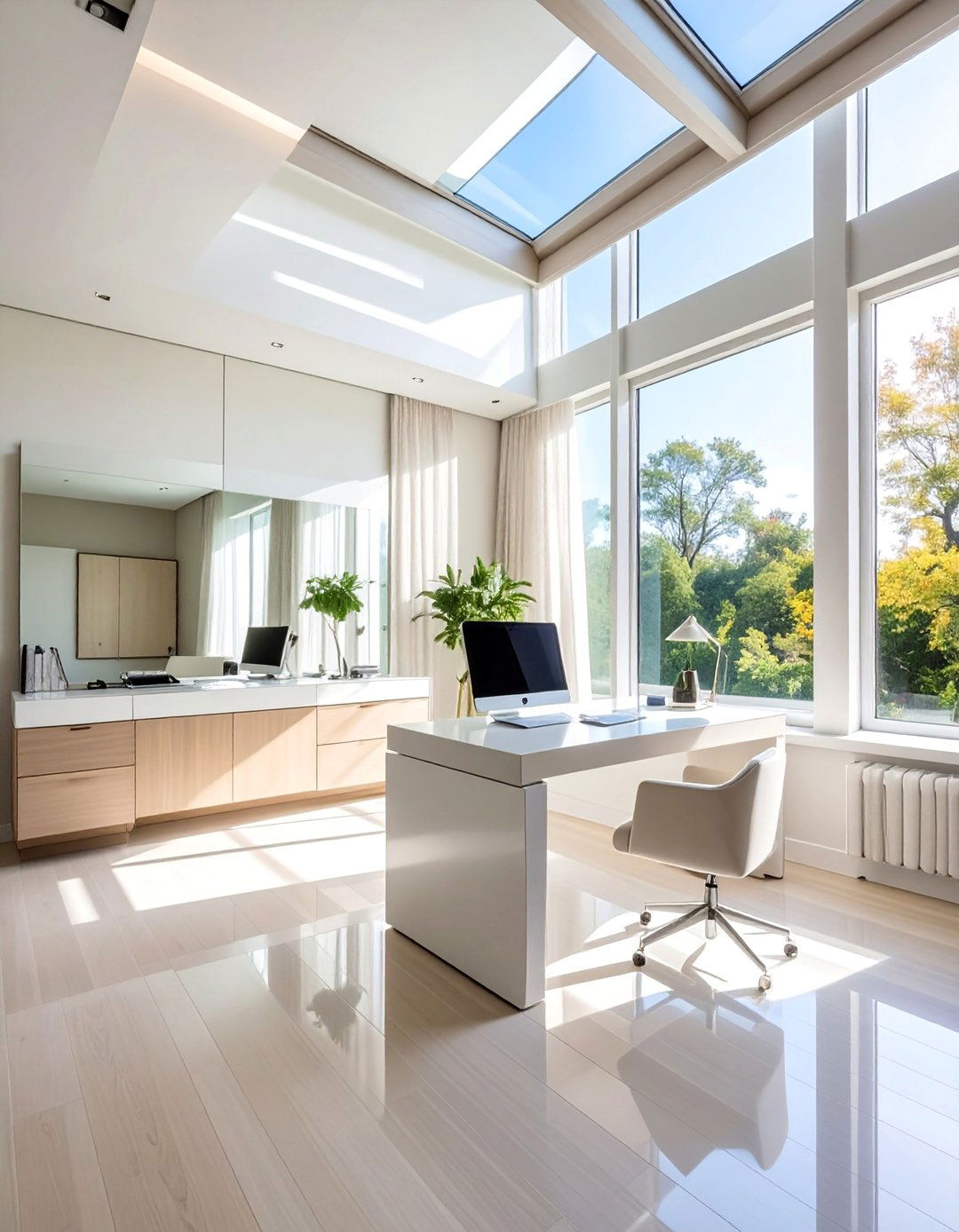
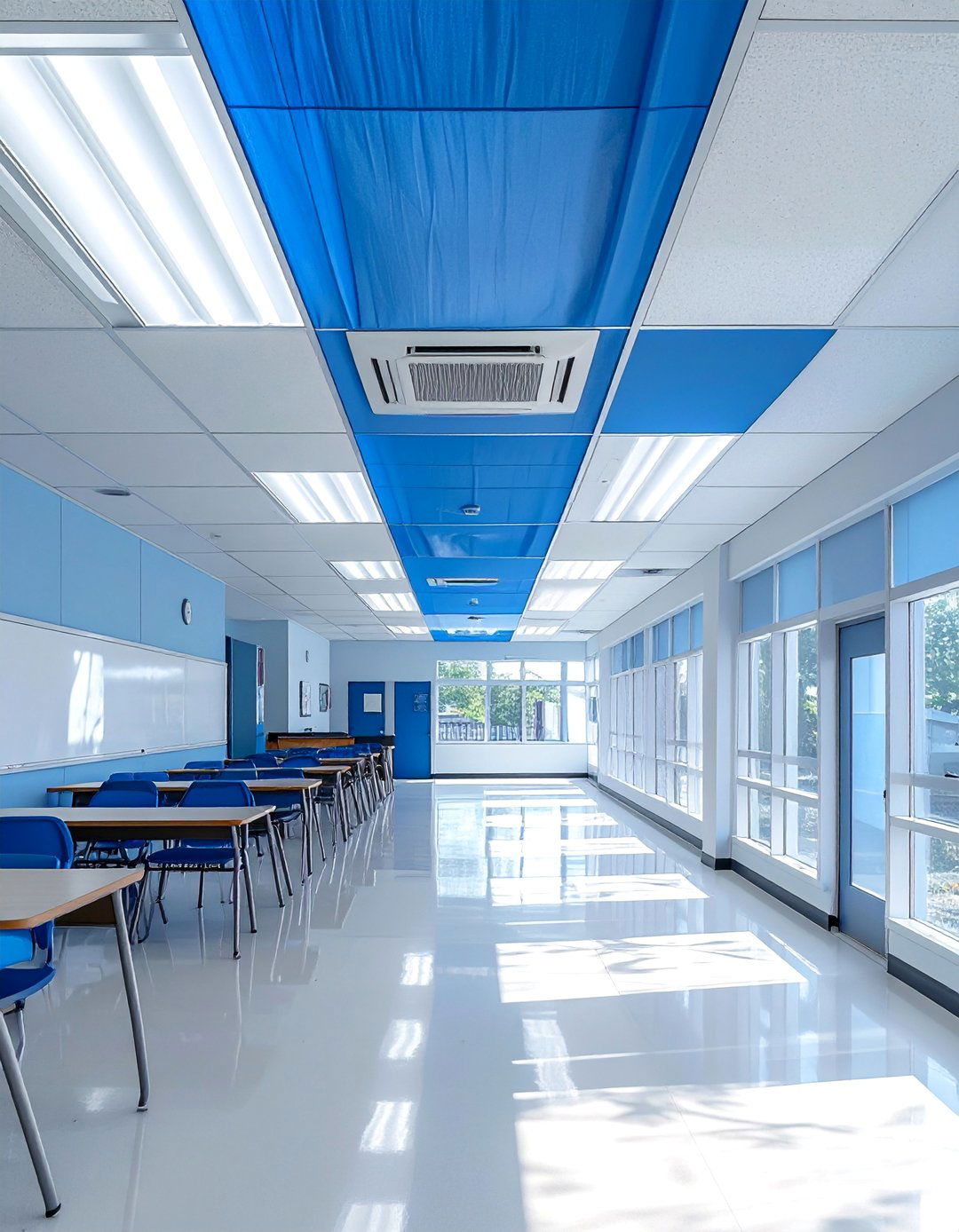
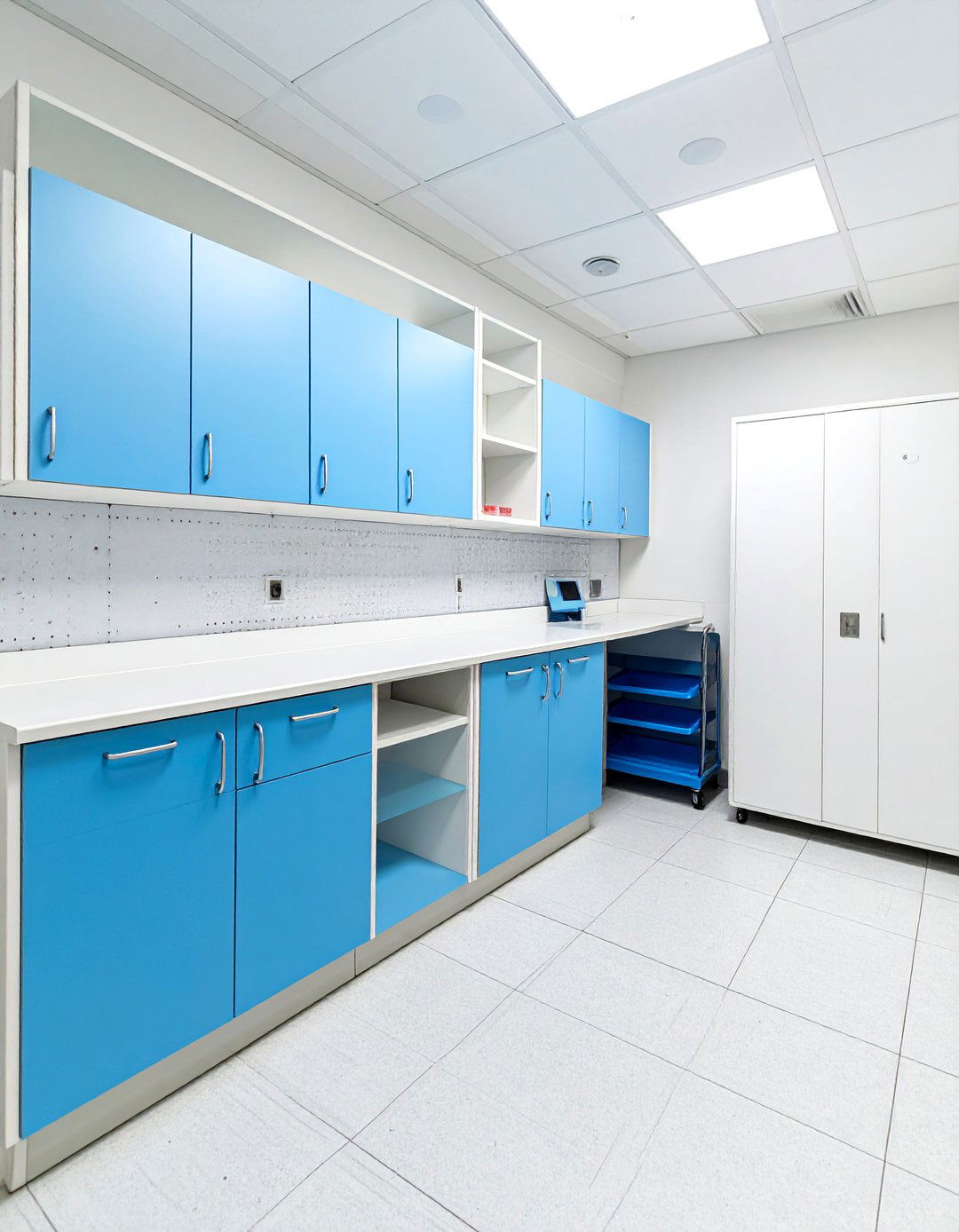
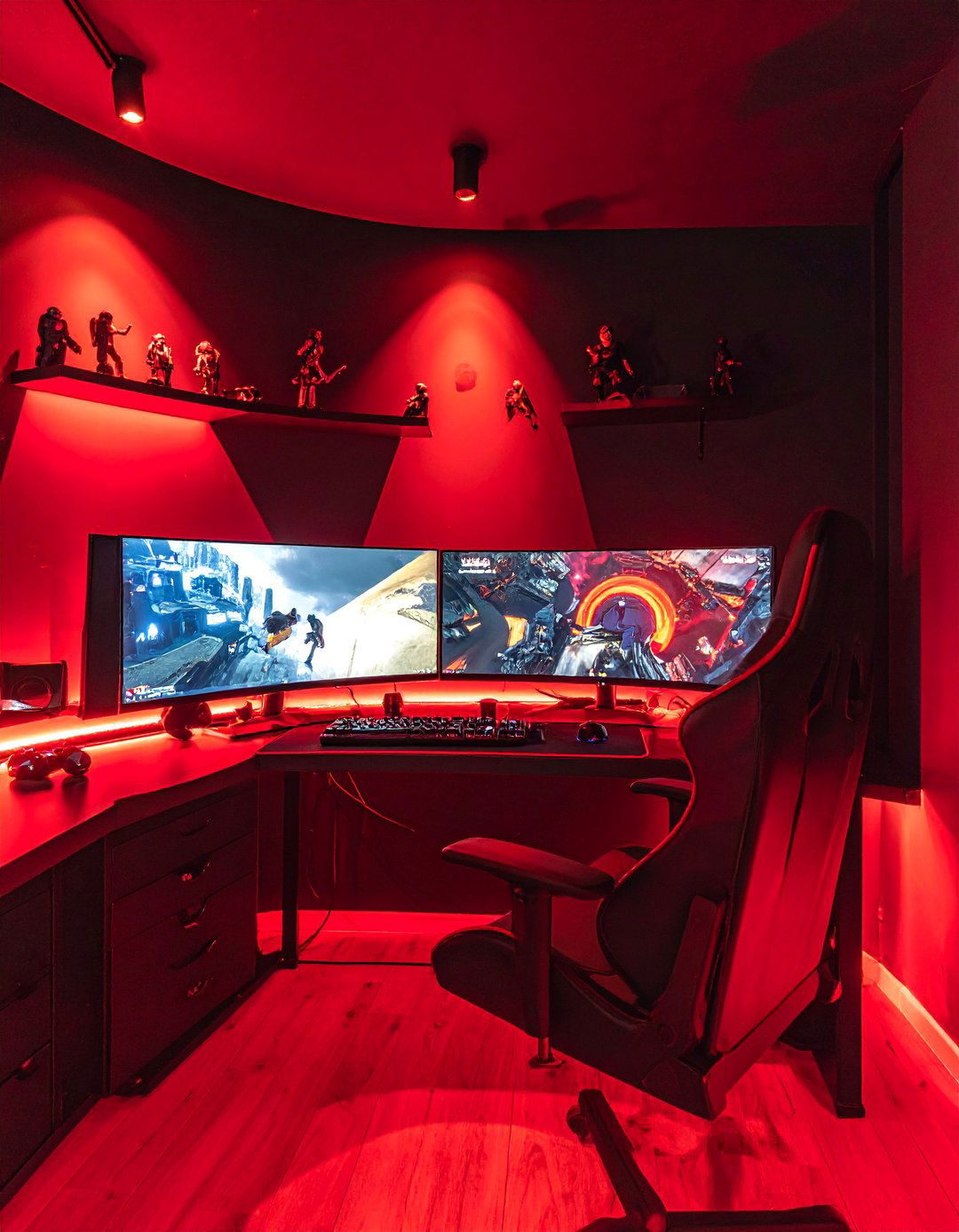
Leave a Reply